This project was a great opportunity and interesting, well-spent 2 months of unstoppable work. It means a lot for me even if you only consider to read it! Special thanks to all the people who helped and were involved in it! Marmal Documentary Project 2024 is one of the two biggest photo projects of mine.
Photography is a perfect opportunity to present the process of making these magnificent costumes from start to finish, going through all the craftsmen and people keepers of the tradition handed down from generation to generation. Local people that are responsible for these creations, share dedication and love to their craft and only in this way preserve the tradition. According to them, strange power dwells in them and even at the end of their physical abilities, the marmals (participants in costumes) continue to be the spirit of the carnival!
Many years ago, high in the mountains, where snowstorms are not a phenomenon, but a daily event, lived ancient and mythical creatures. Gigants, with long, thick fur that kept the cold away from them. Scary looking, they were. They scared everything and everyone stayed away from them. So the people in the villages and towns, inspired by them, made costumes with which to dispel evil from their homes. Masked in thick and shaggy goat skins and carrying large bells, they were also sinister and successfully drove away the evil spirits. Rus (the old day) went out, Sur (the new day) came - the day began to grow, and fertility returned to people. Since then, Bulgarians dress up every year and preserve the ritual, which has become a tradition.
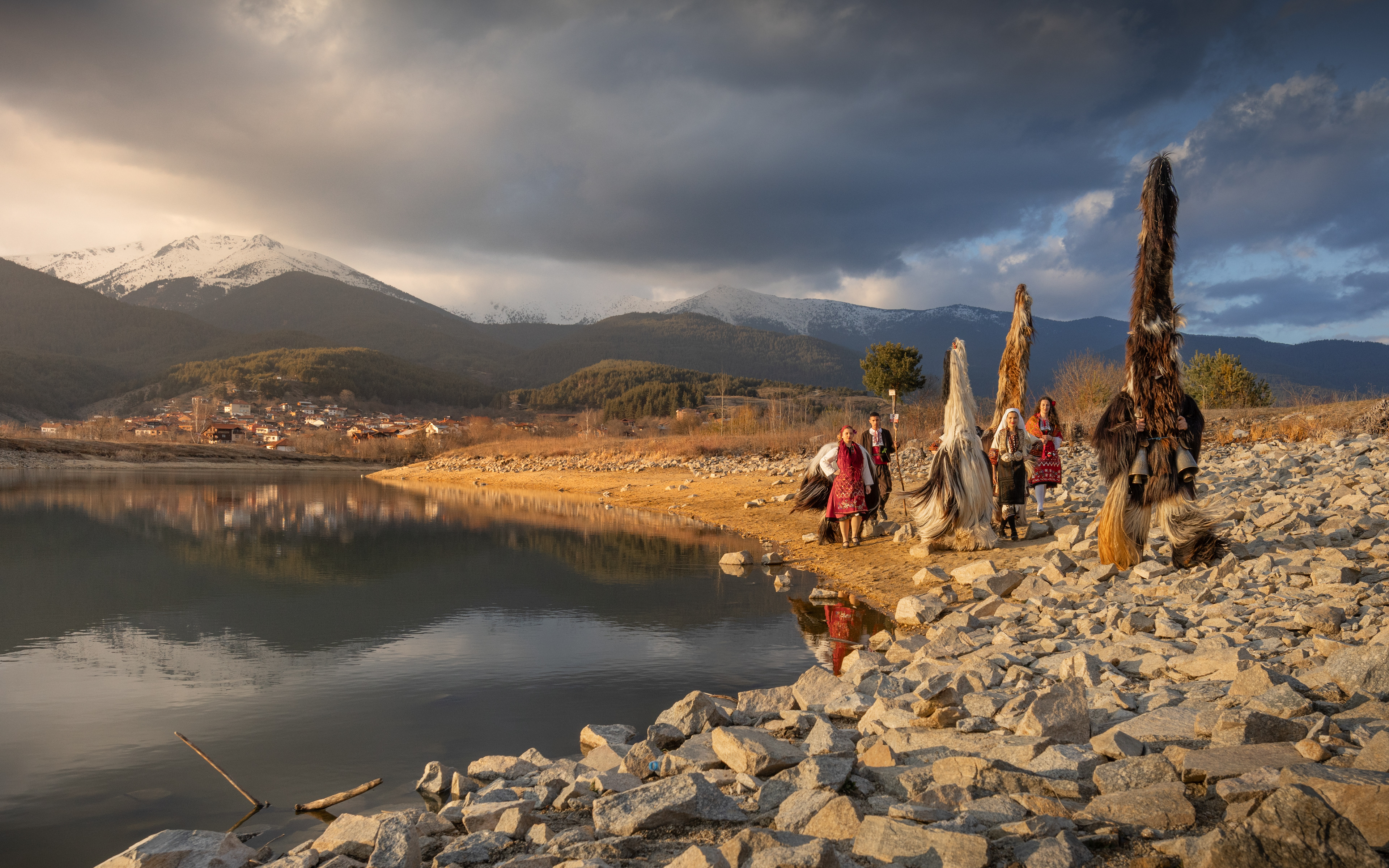
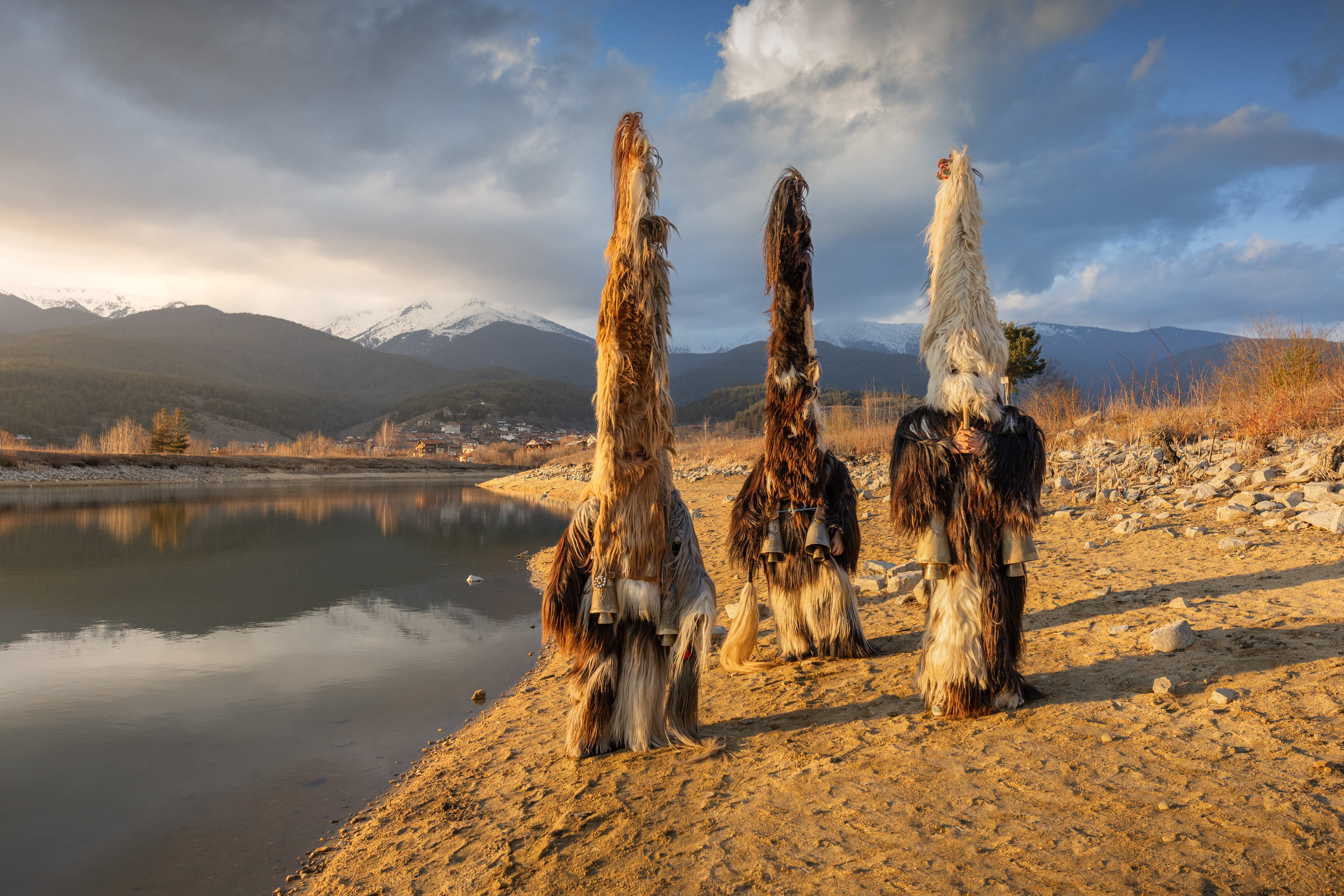
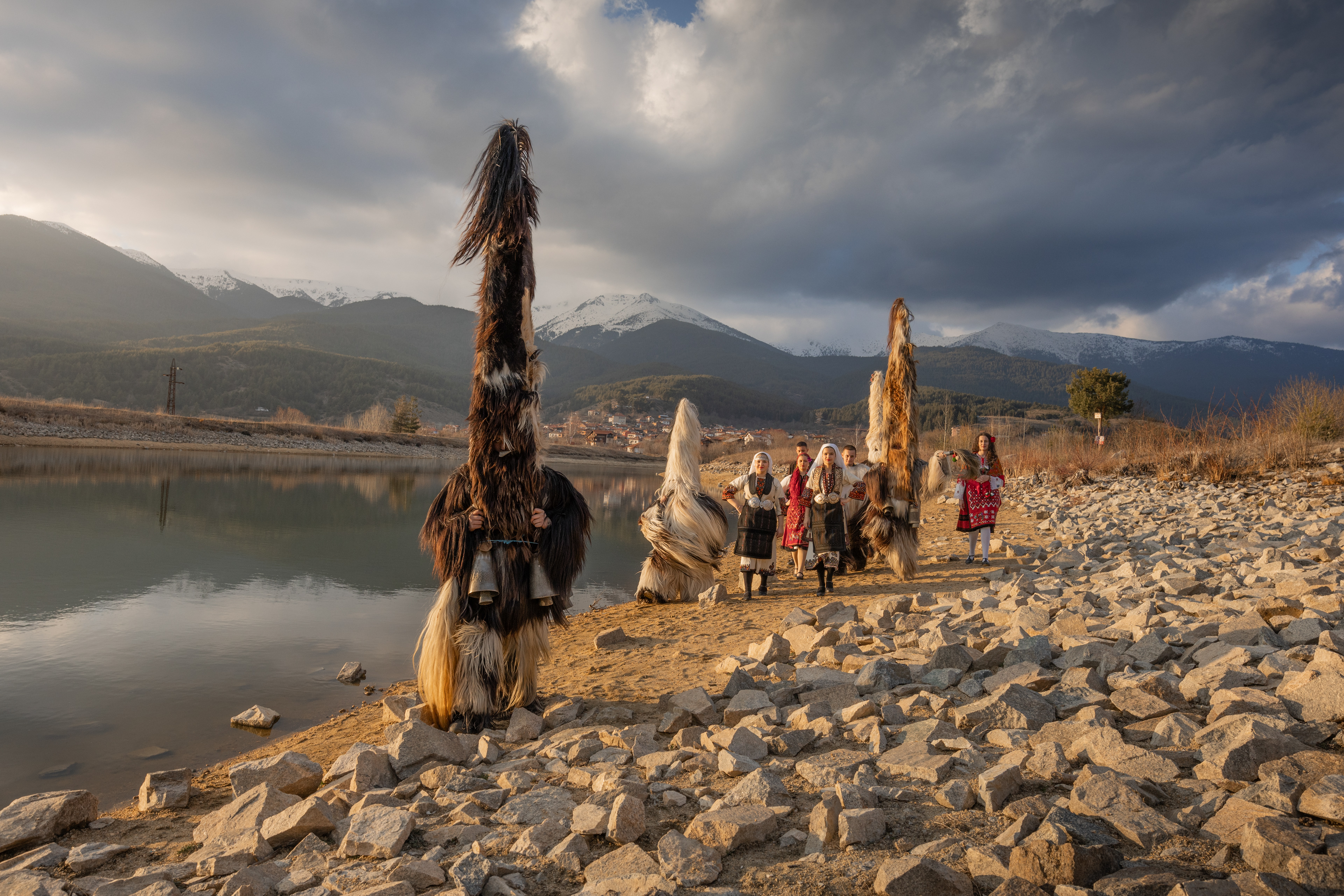
In Bulgaria there are centuries-old traditions, traditions that gather and unite the people, and one such tradition is kukerstvoto / kukerism (Bulgarian tradition). Known since centuries ago, the kukerism is practiced in different parts of the country, but definitely one of its strongest roots is from the place where Rila, Pirin and the Rhodope mountains meet - the towns of Razlog, Bansko and the surrounding villages. Different legends tell different stories about the kukers (marmals) and the tradition, but what they all have in common is that during the festivities they drive away evil and bring health and fertility to the homes. It is important to mention that probably during the celebrations the people are united, just like on the national holiday of the country. In addition, the carnivals attract thousands of tourists every year who admire the attractive marmal costumes.
There is an intimate relationship between the dressmakers of Razlog and Bansko, who communicate constantly. In fact, the creation of these ancient costumes is a long process, requiring both patience and skill of the craftsmen. We head to Tony and his farm at Predel Pass. Here is one of the centers from which the beginning of a suit starts. Tony raises various animals on his farm, but for the marmal costumes he raises billies (male goats). These are the animals from whose skins the costumes are made. Tony shares that he has been raising the animals for about four years, and during that time a lot of care and love for them is required of him. Finally, Tony distributes the animals and sends them to the next place on the long way. He is grateful to be a part of helping to preserve the traditions of the region.
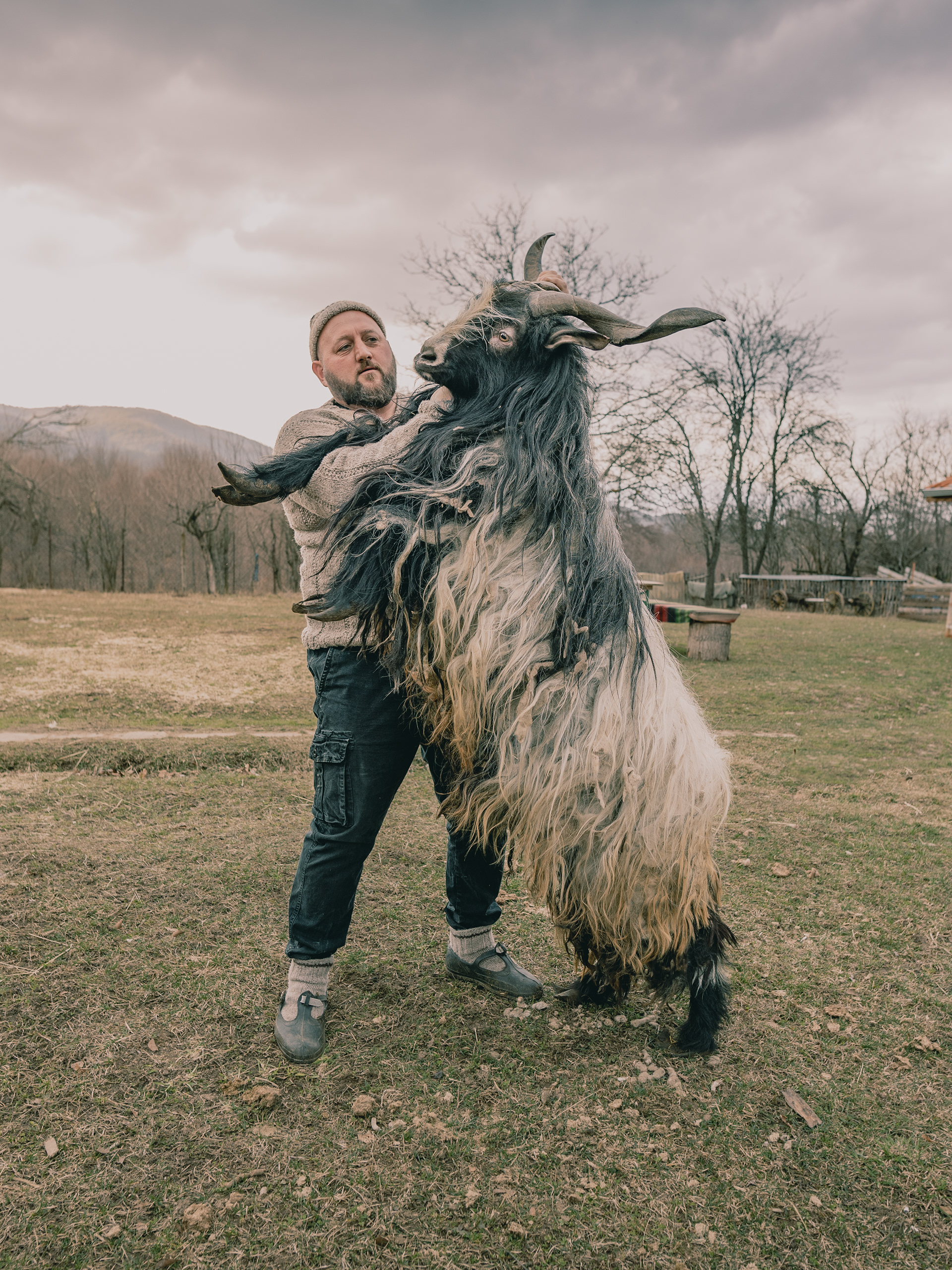
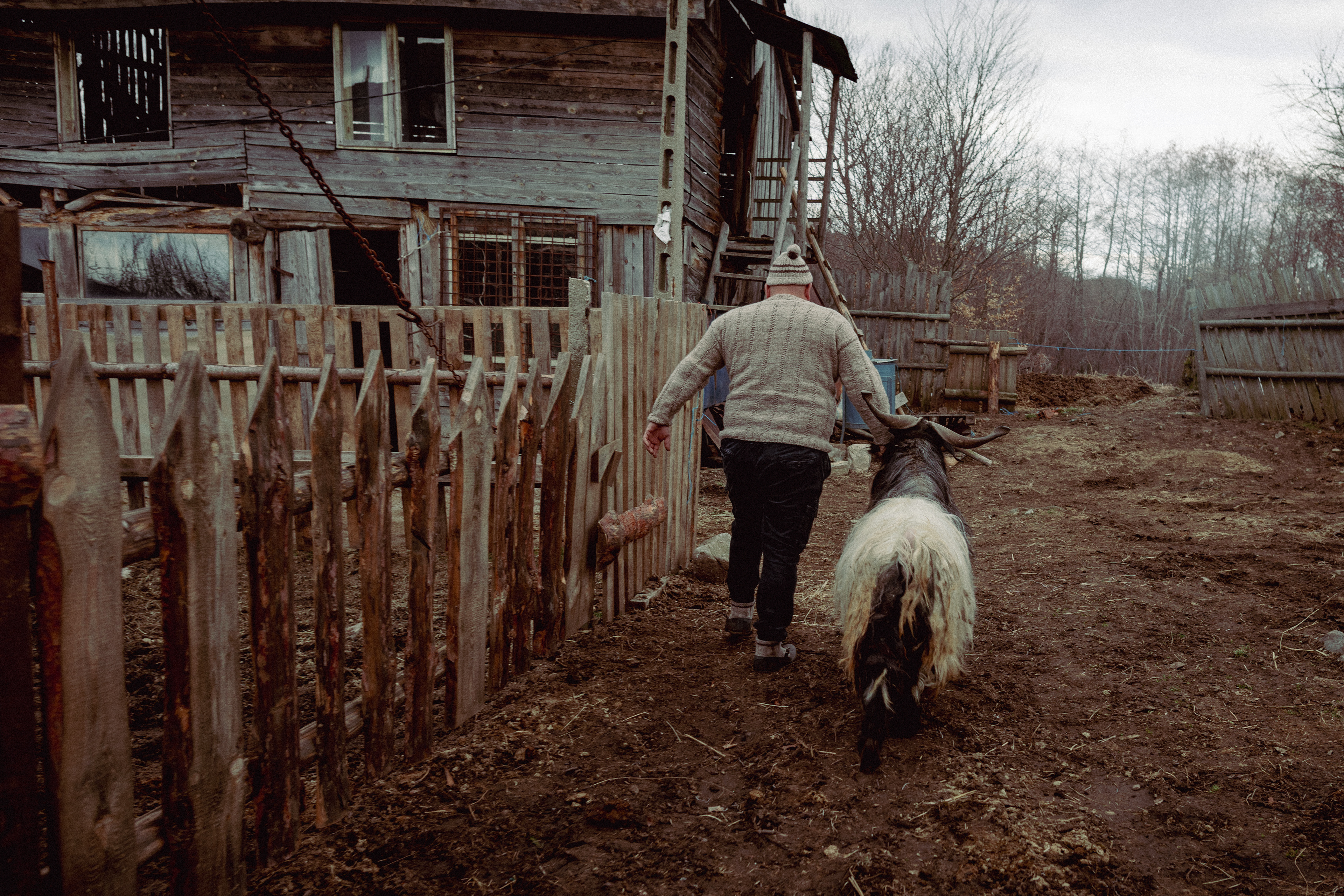
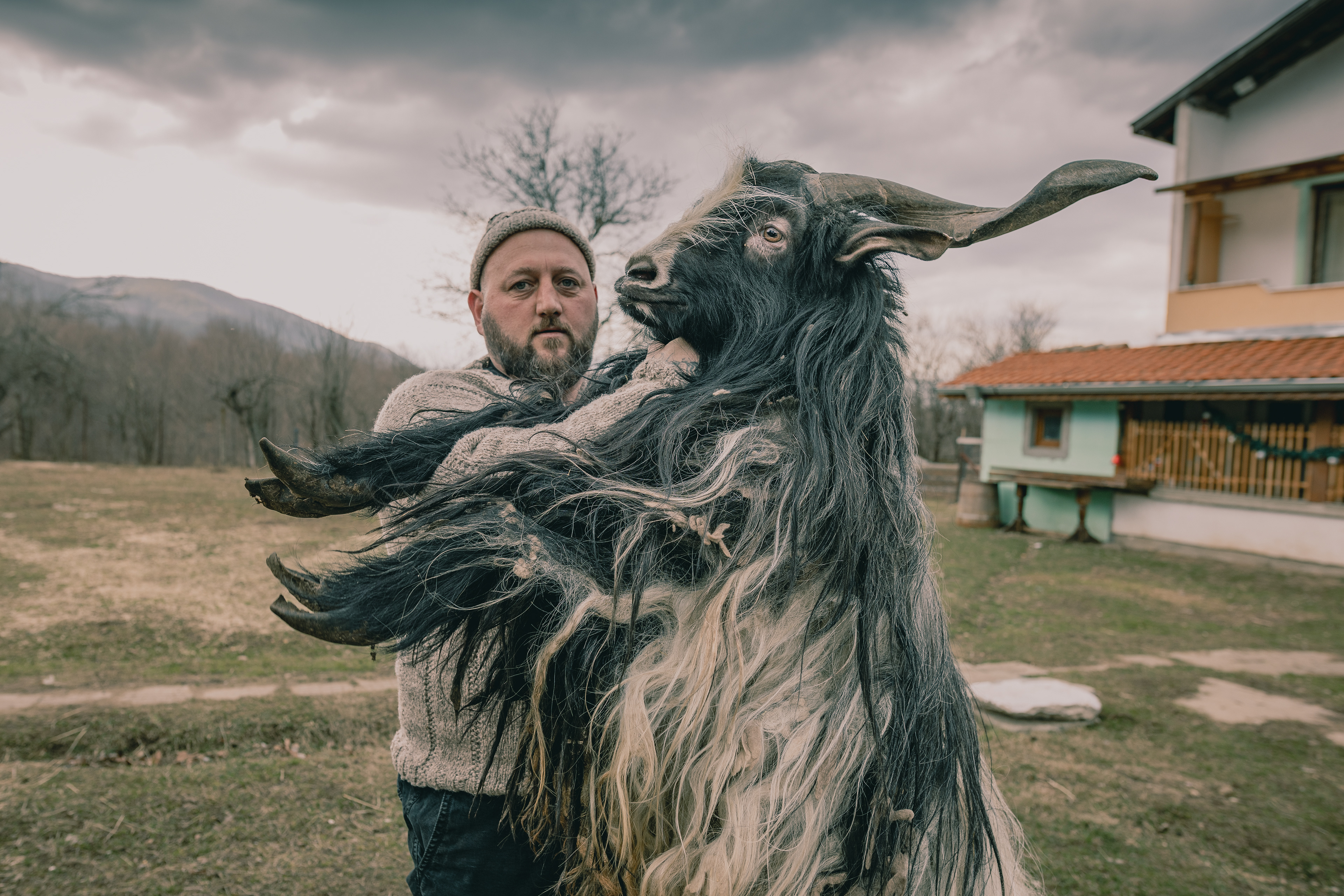
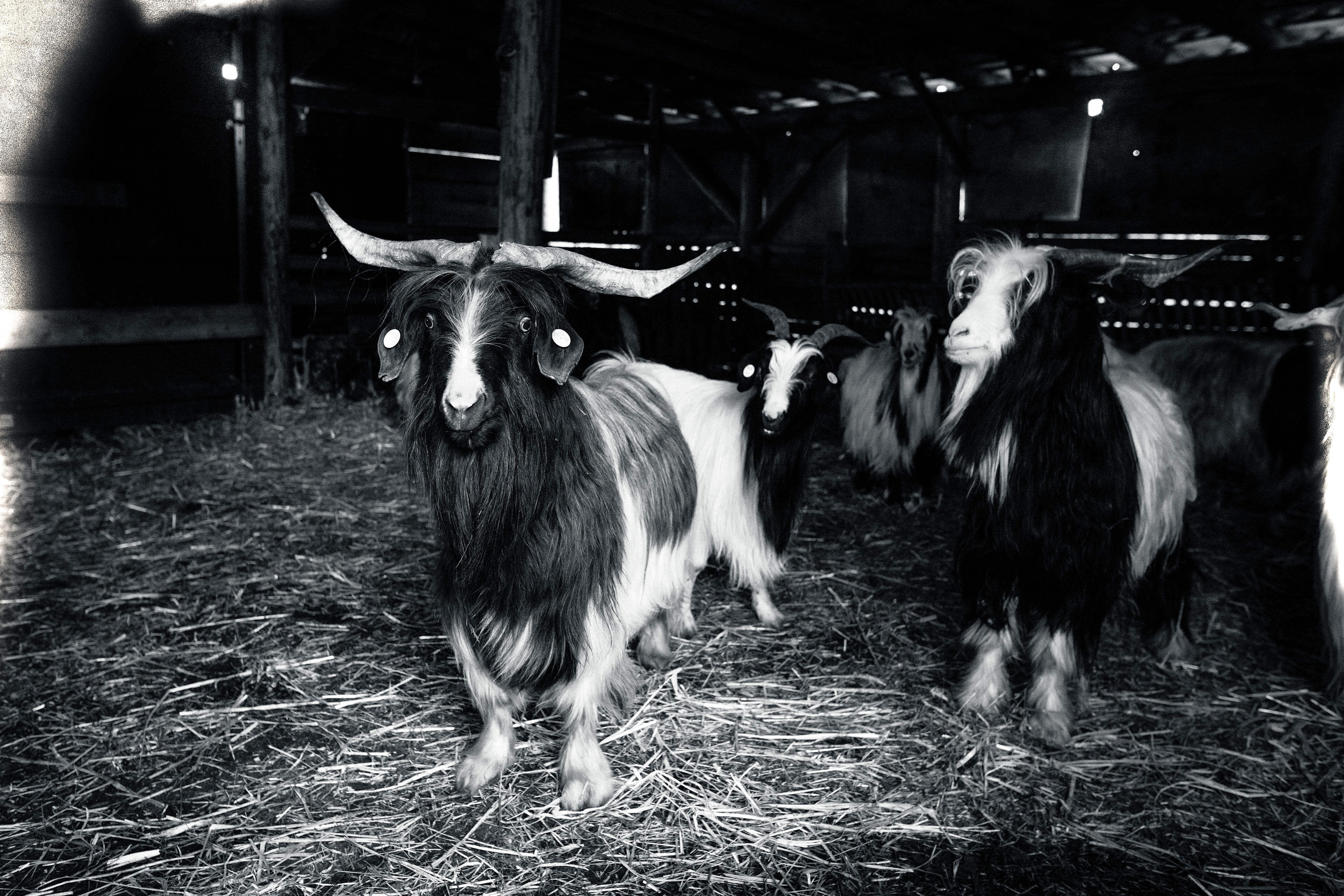
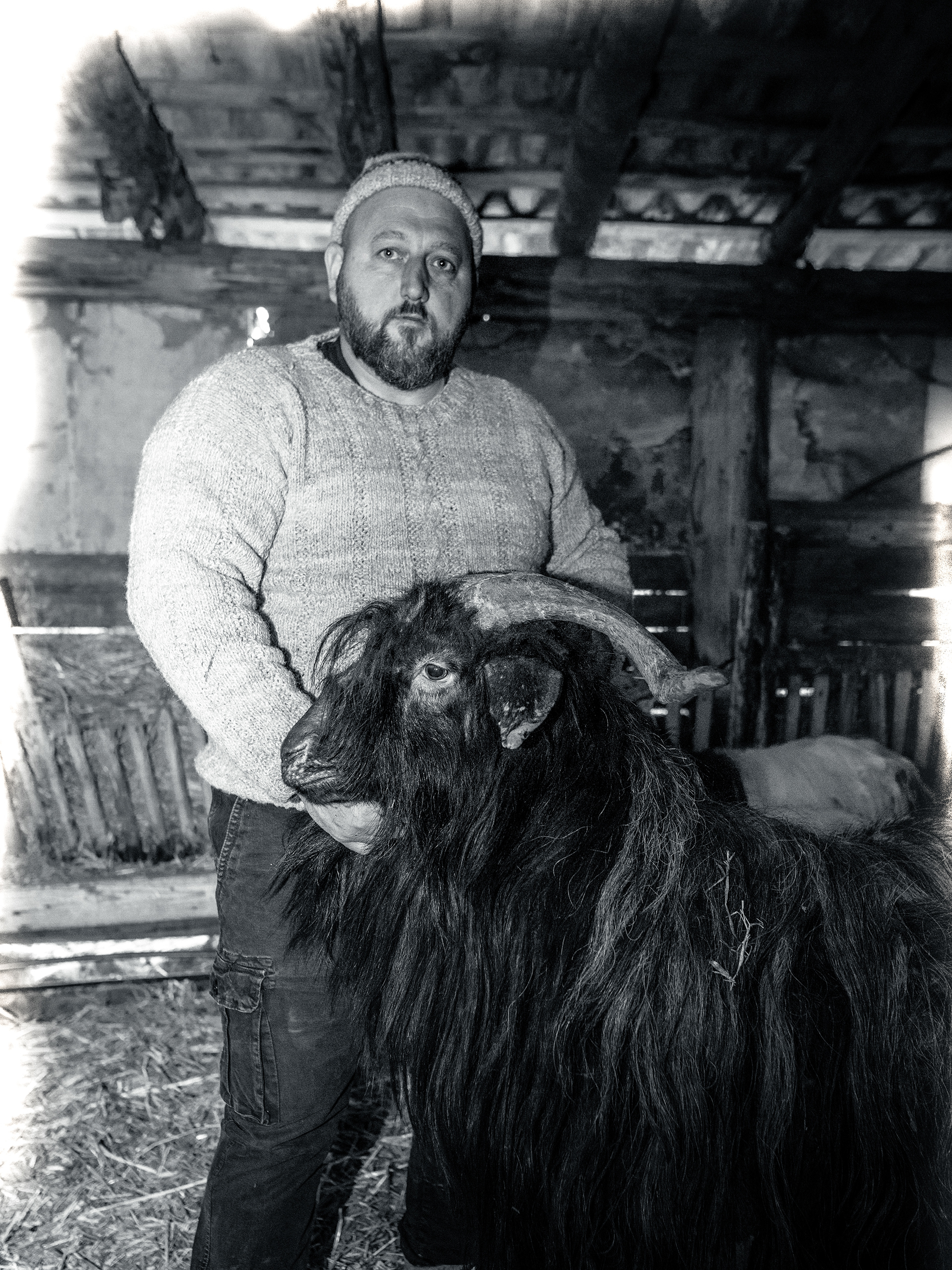
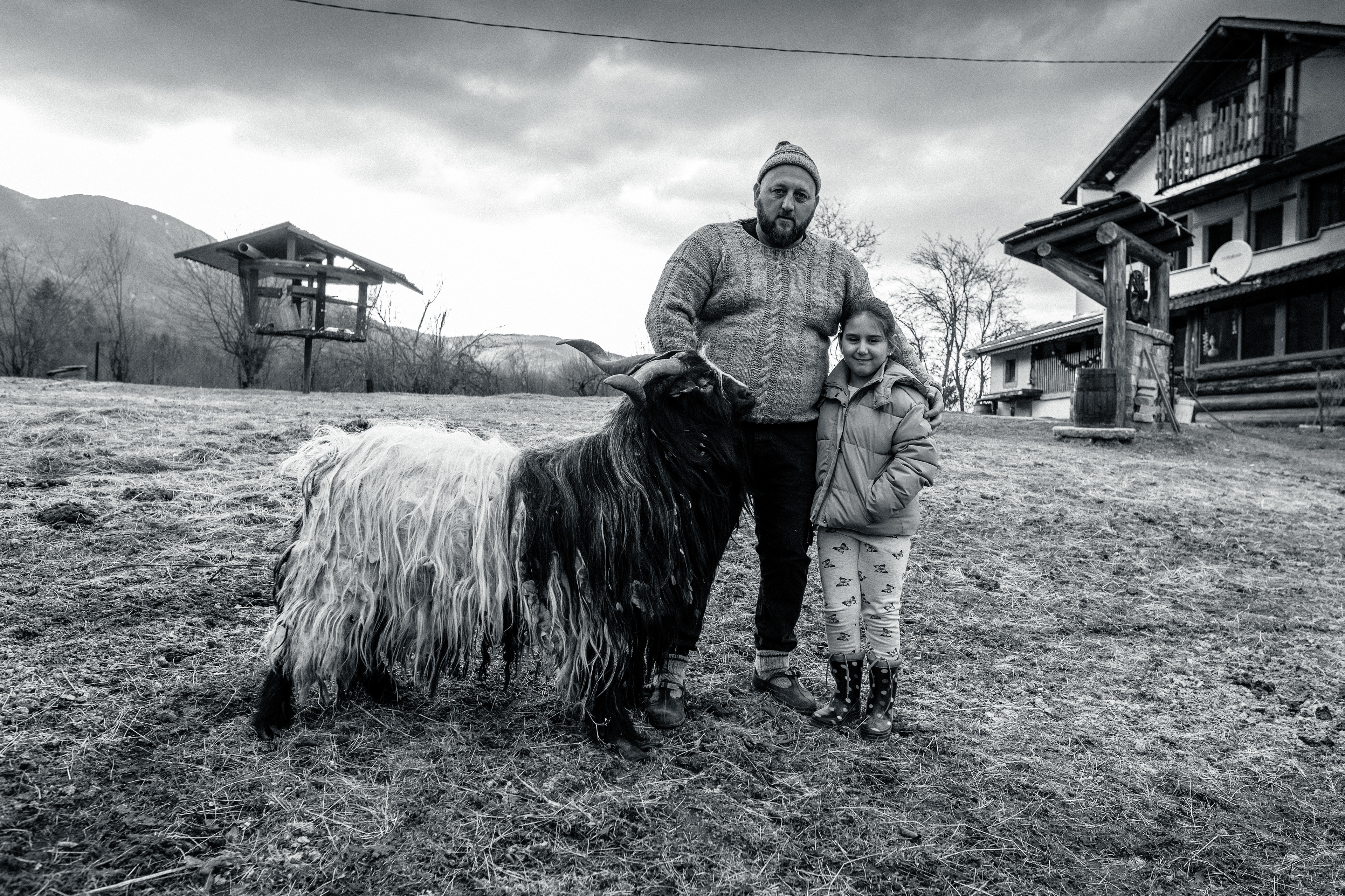
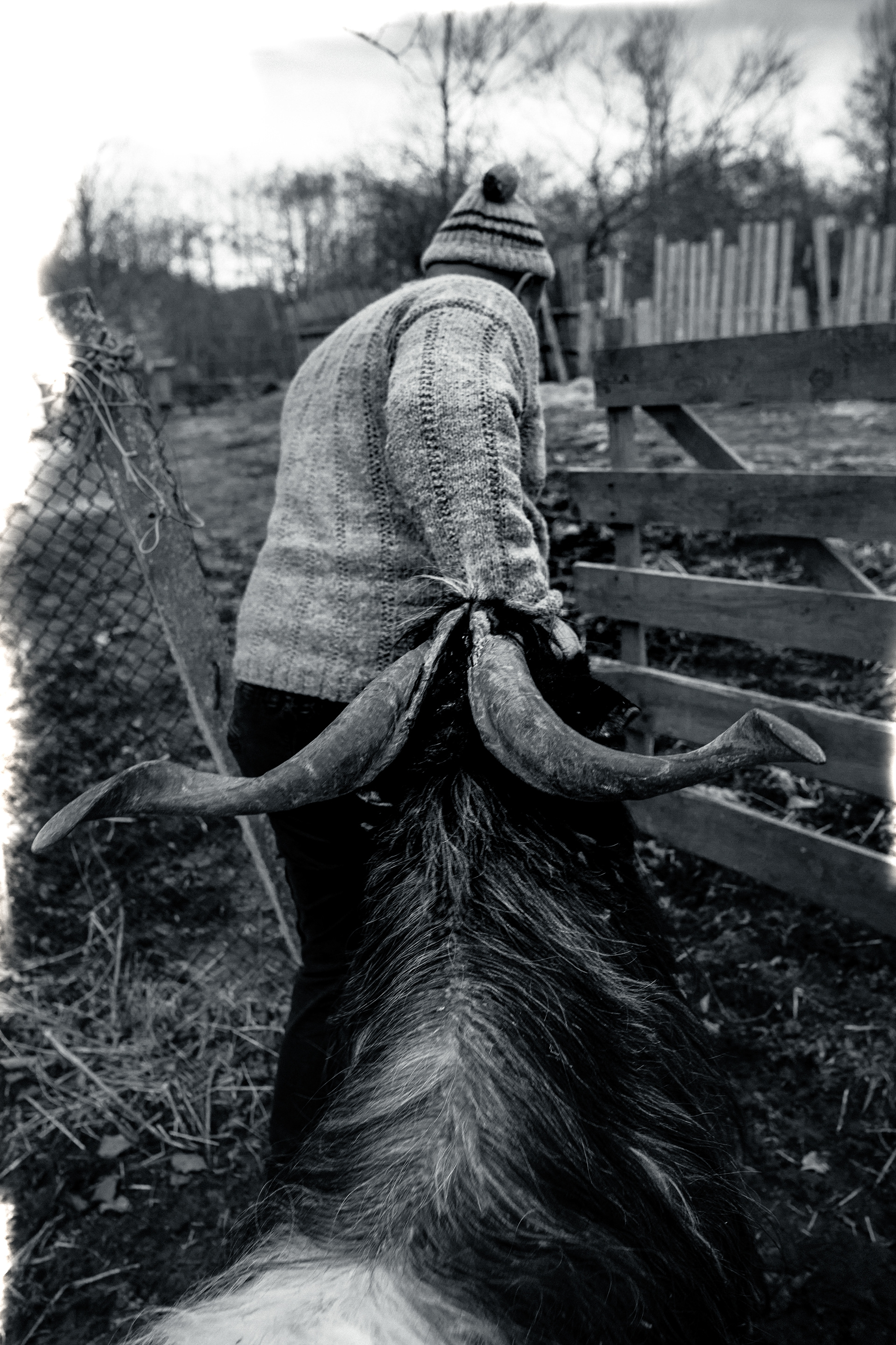
Once the skins are shipped, they undergo key processing to clean and preserve them for the next centuries. In the past, they were salted and then treated with cornmeal, so they remained preserved. Today, this process has been completely replaced by an easier method, but equally effective - chemical treatment. Once past through this process, the skins come to some of the local costume tailors. One of them is Blago, grandson of one of the most famous guardians of this tradition in the region - Blago Tatarski. Thus Blago's grandfather's family is proud of his deeds and continues to preserve his plights. Heading to Blago's home, he shares that his home is not just a workshop for the costumes, but also a gathering hub for the local marmals group - Starchevata, but more on that later.
When the skins reach Blago's home, he gathers his faithful team of helpers – from young to elder, and together they tackle the next process. As the billies release protective mosses into their fur, the skins must be cleaned of them and also detangled and combed - this process is called chesane (combing). Blago says that combing a hide can take several days or a month, but he can always count on his team. Such combing is done every year on the costumes before the carnivals, so that they are combed and look good for the audience.
When the skins pass this way, Blago examines the skin and carefully chooses which part of the suit it will be used for. An average of 7 skins are used for a suit, and the larger it is, the more skins it will require. Costumes with longer hair or a tall chuchulka (mask) also require more materials. Then the craftsman begins to cut and shape the parts of the kuker suit. When he's done with that, Blago starts sewing by hand or with a sewing machine he works on with someone else. In addition to create new suits, he also takes care of the ones already made - not only by combing, but also by sewing. While he was sewing the sleeves of a suit, he told about the belief the higher the mask, the closer the marmal is to God and thus the connection with the other world is obtained. One thing, however, he cannot explain to himself - how the marmals withstand this tension and exhaustion. In order to bear this weight, according to him, an apparently strange power dwells in them.
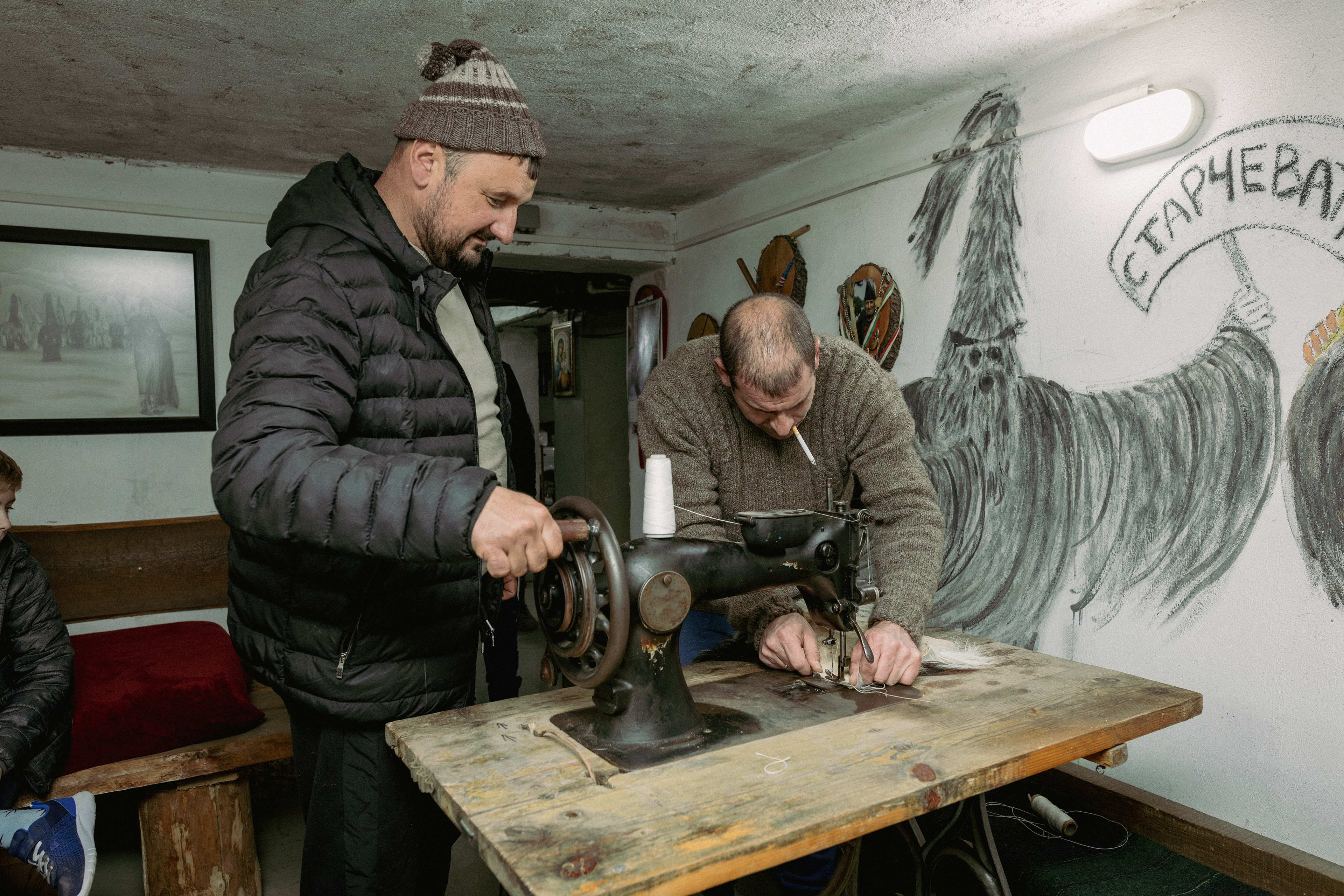
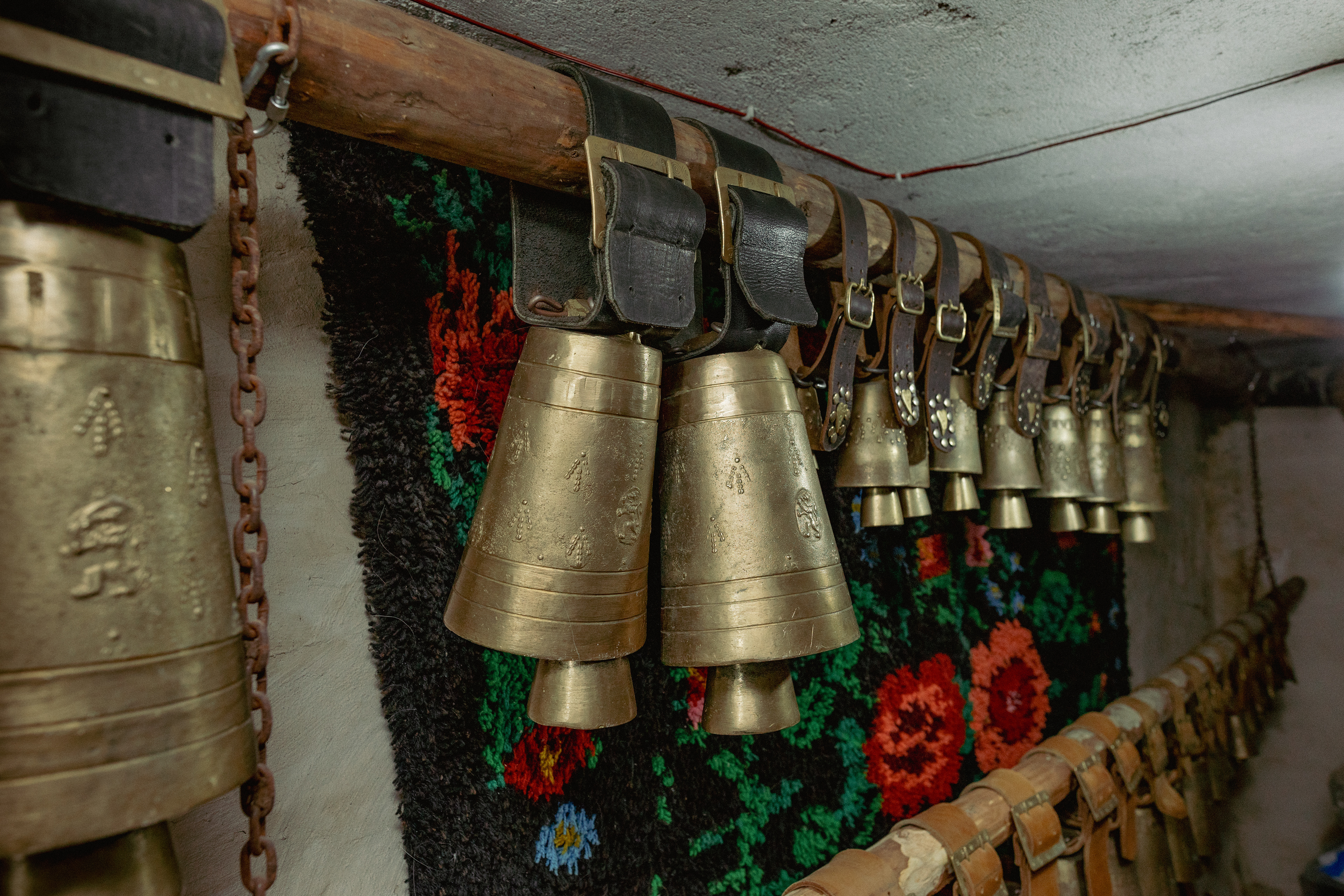
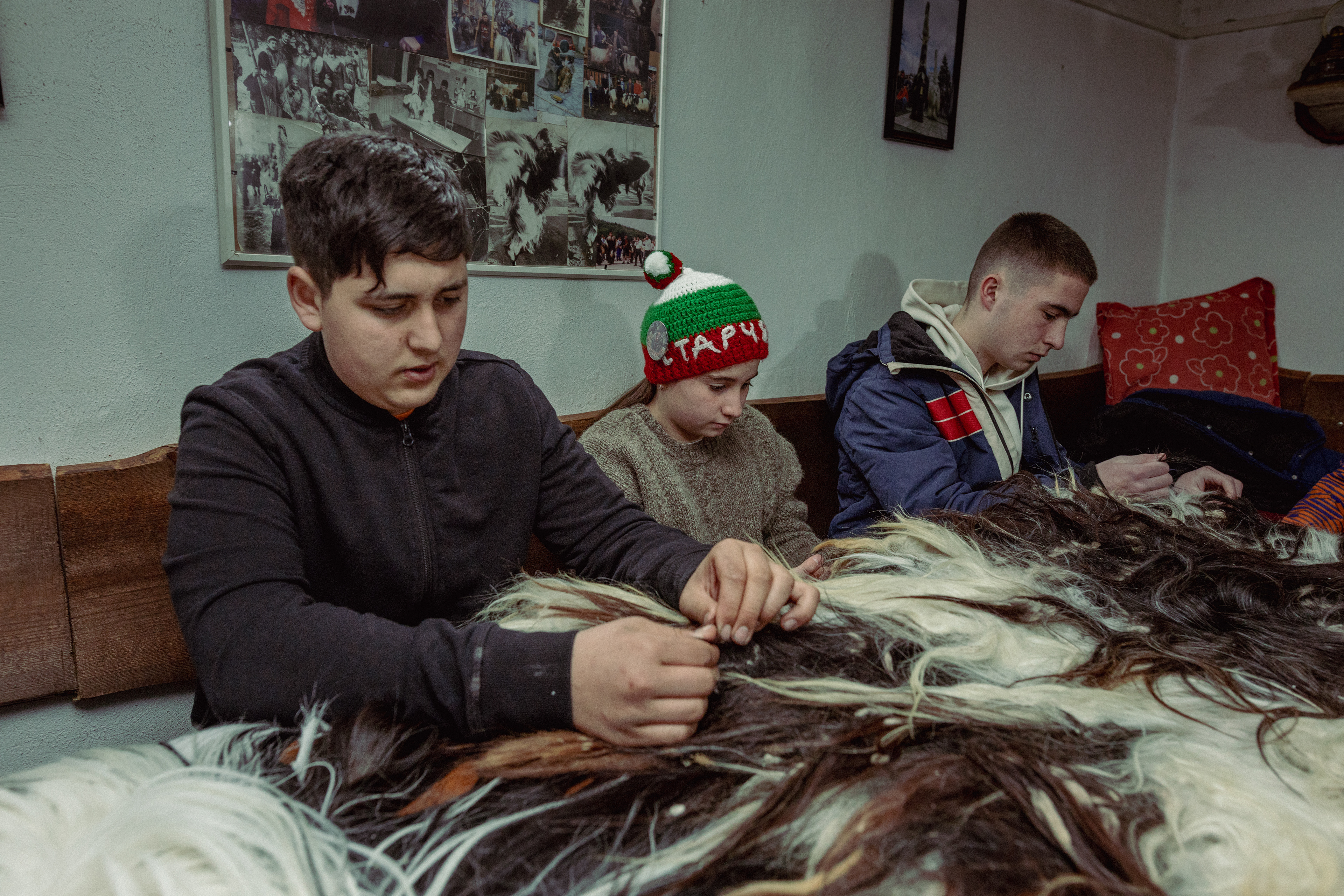
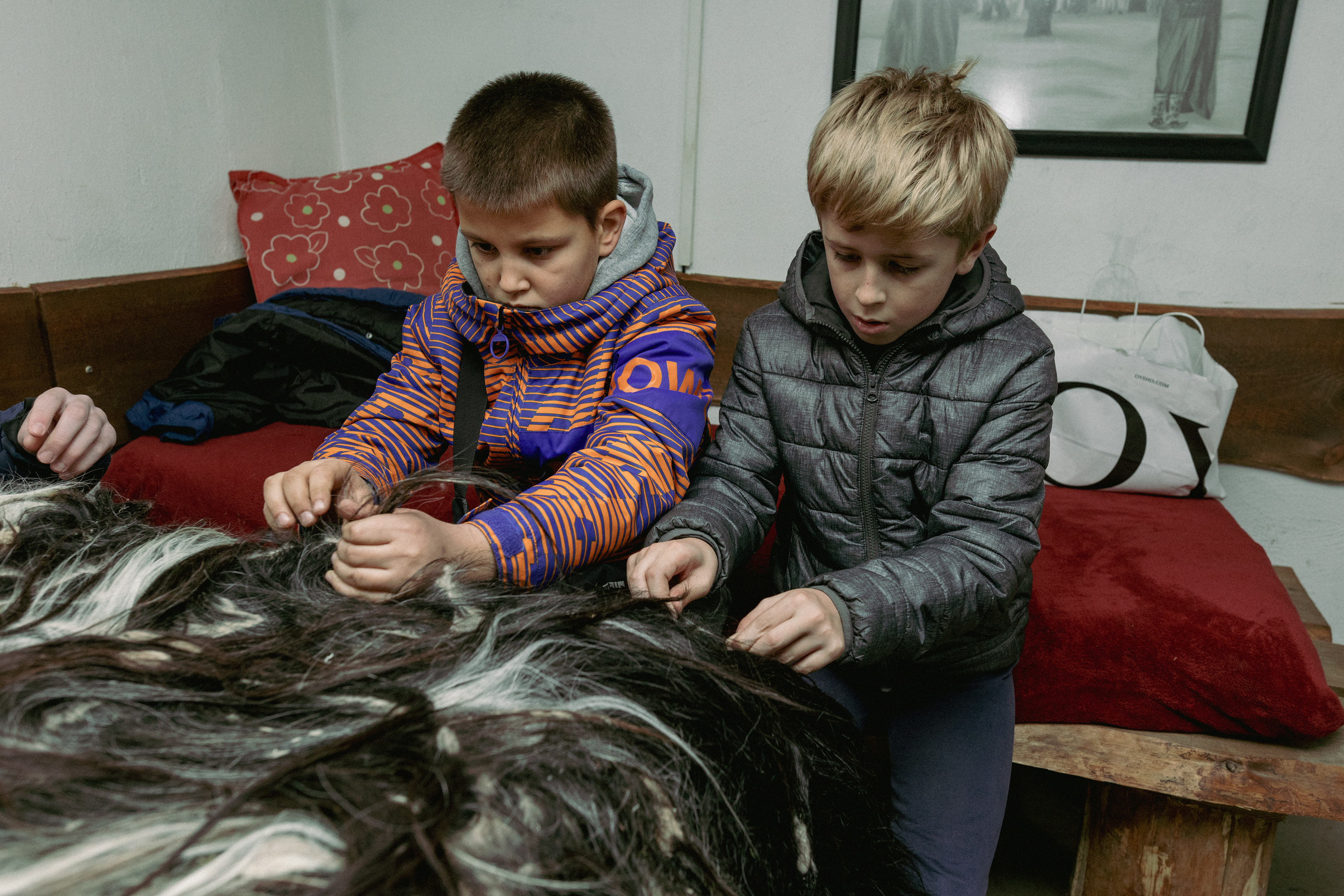
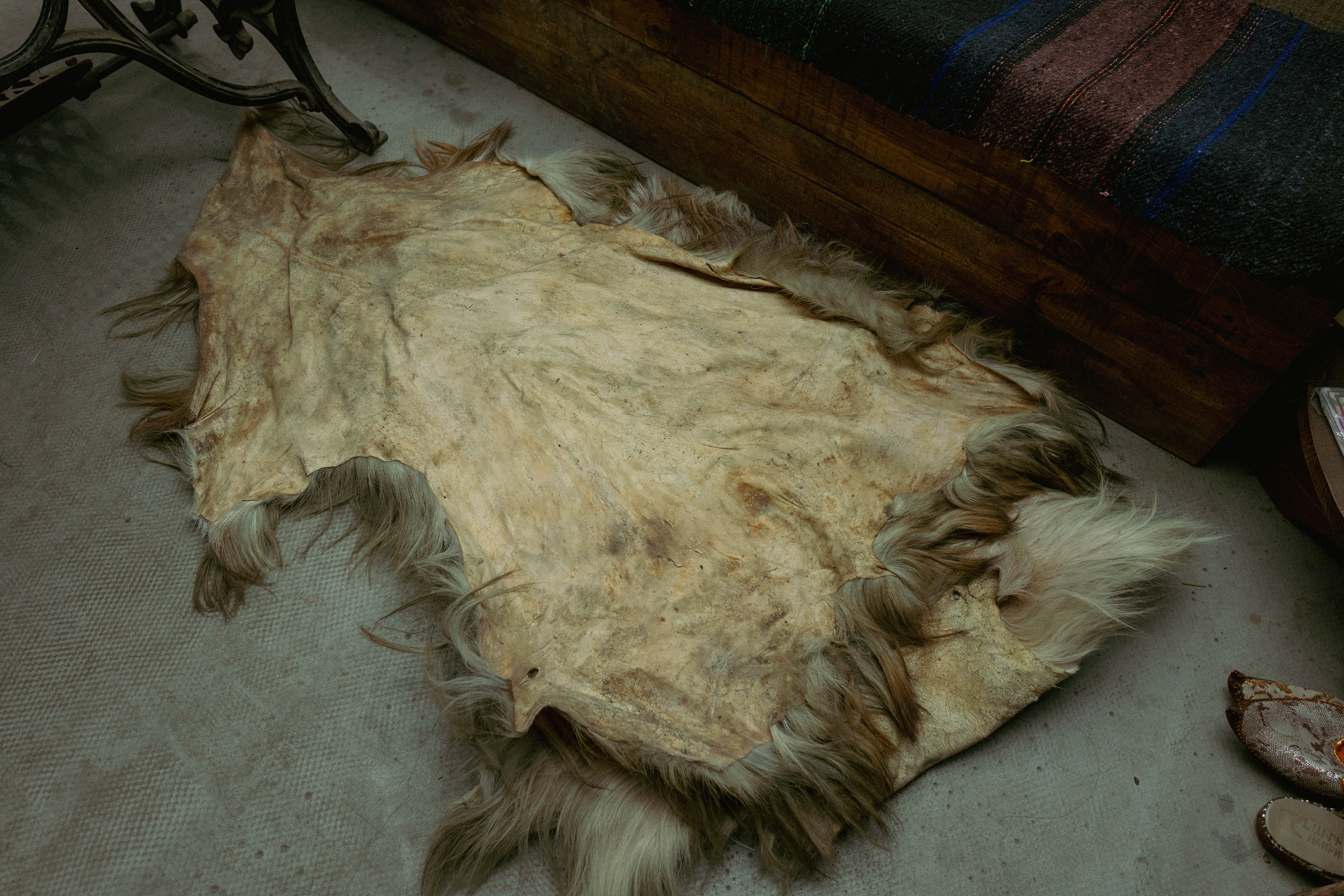
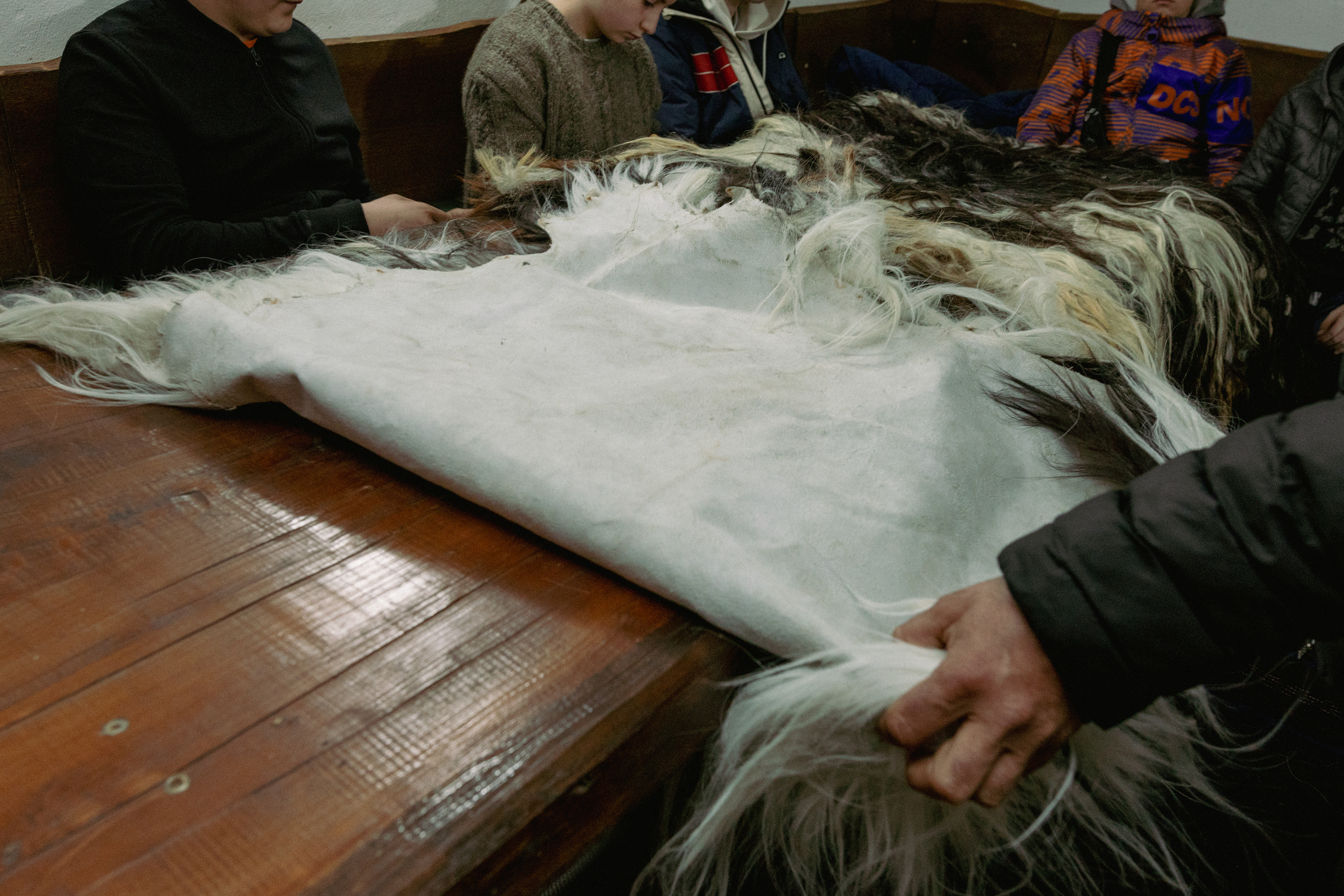
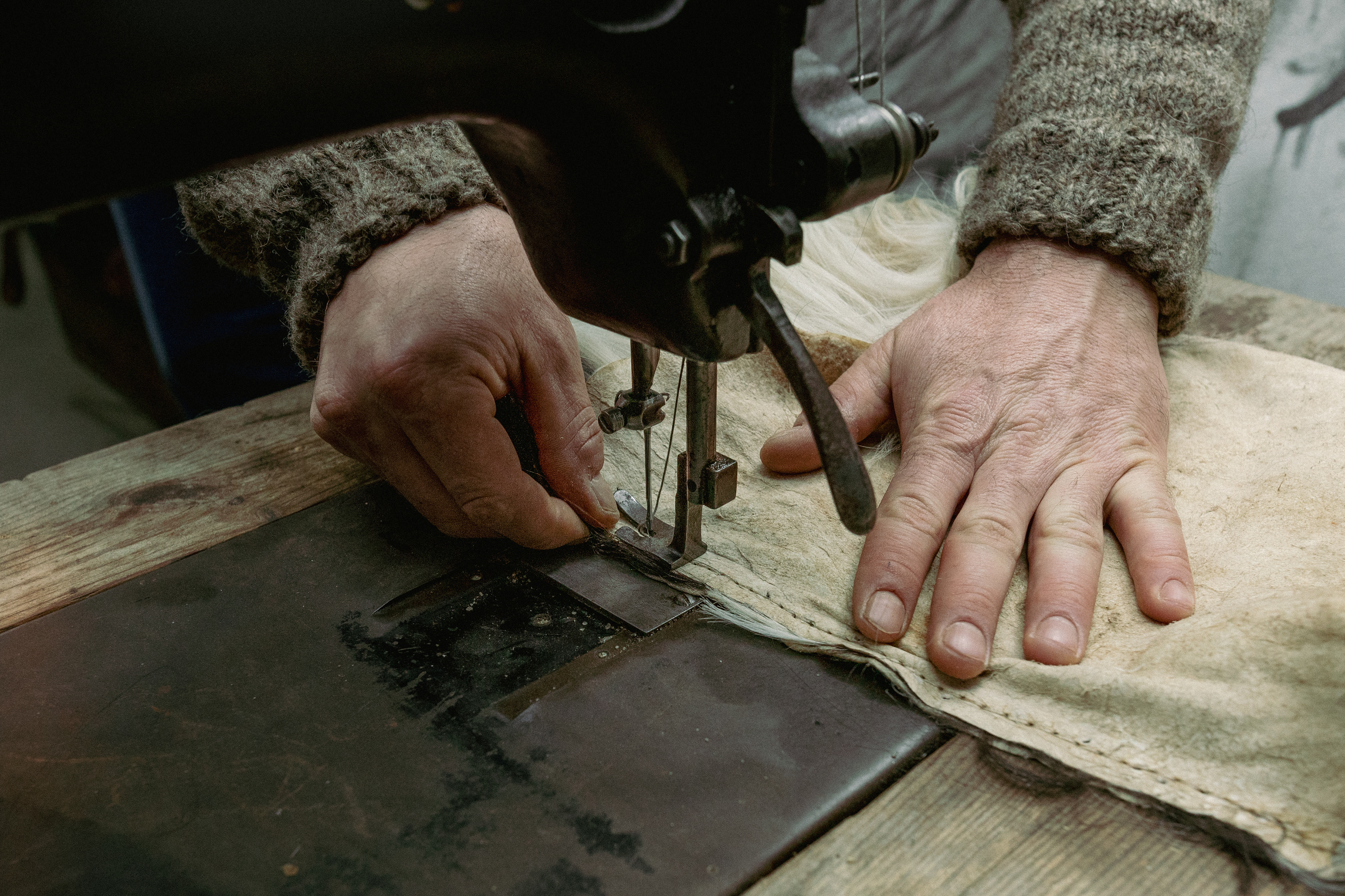
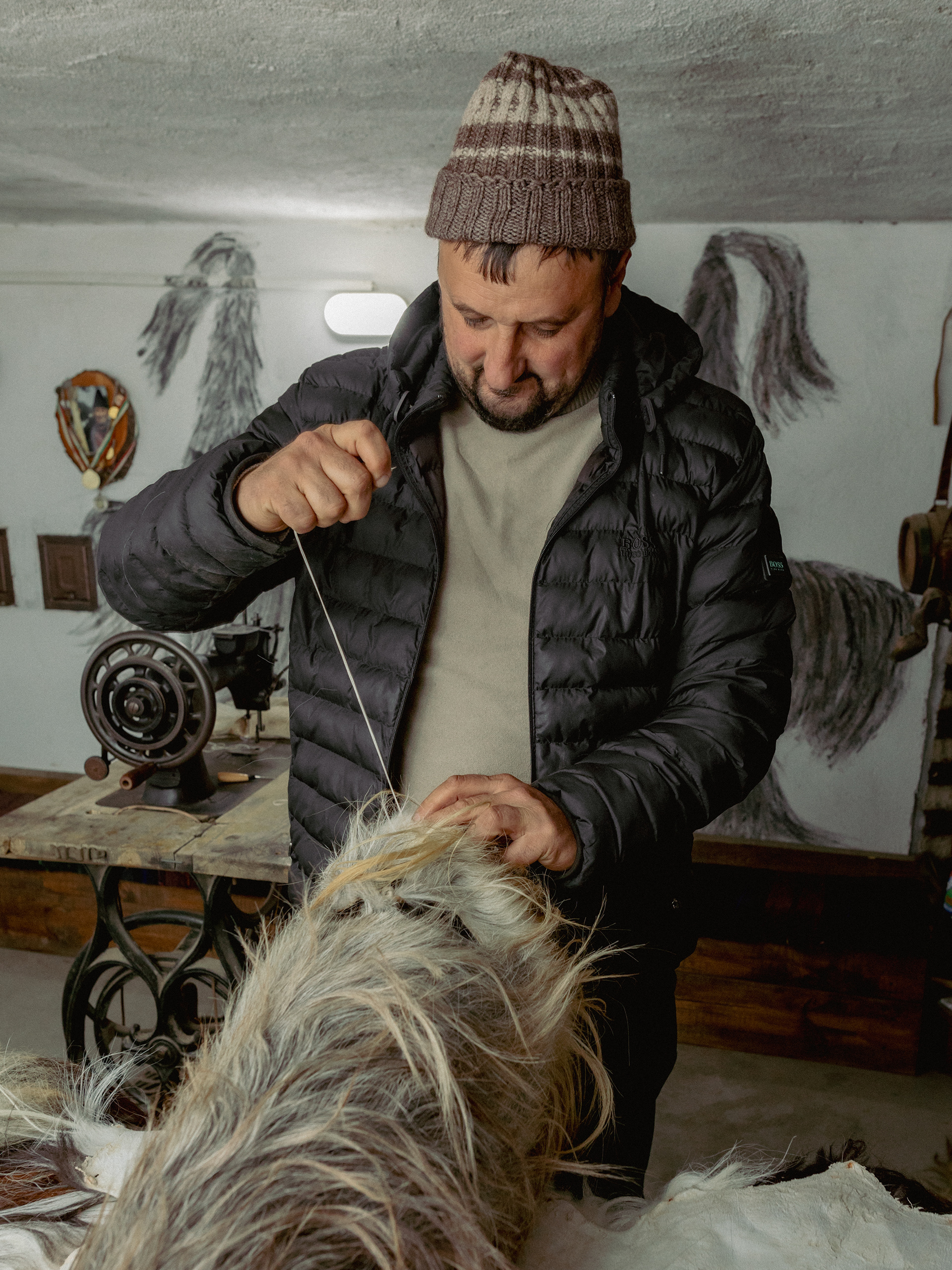
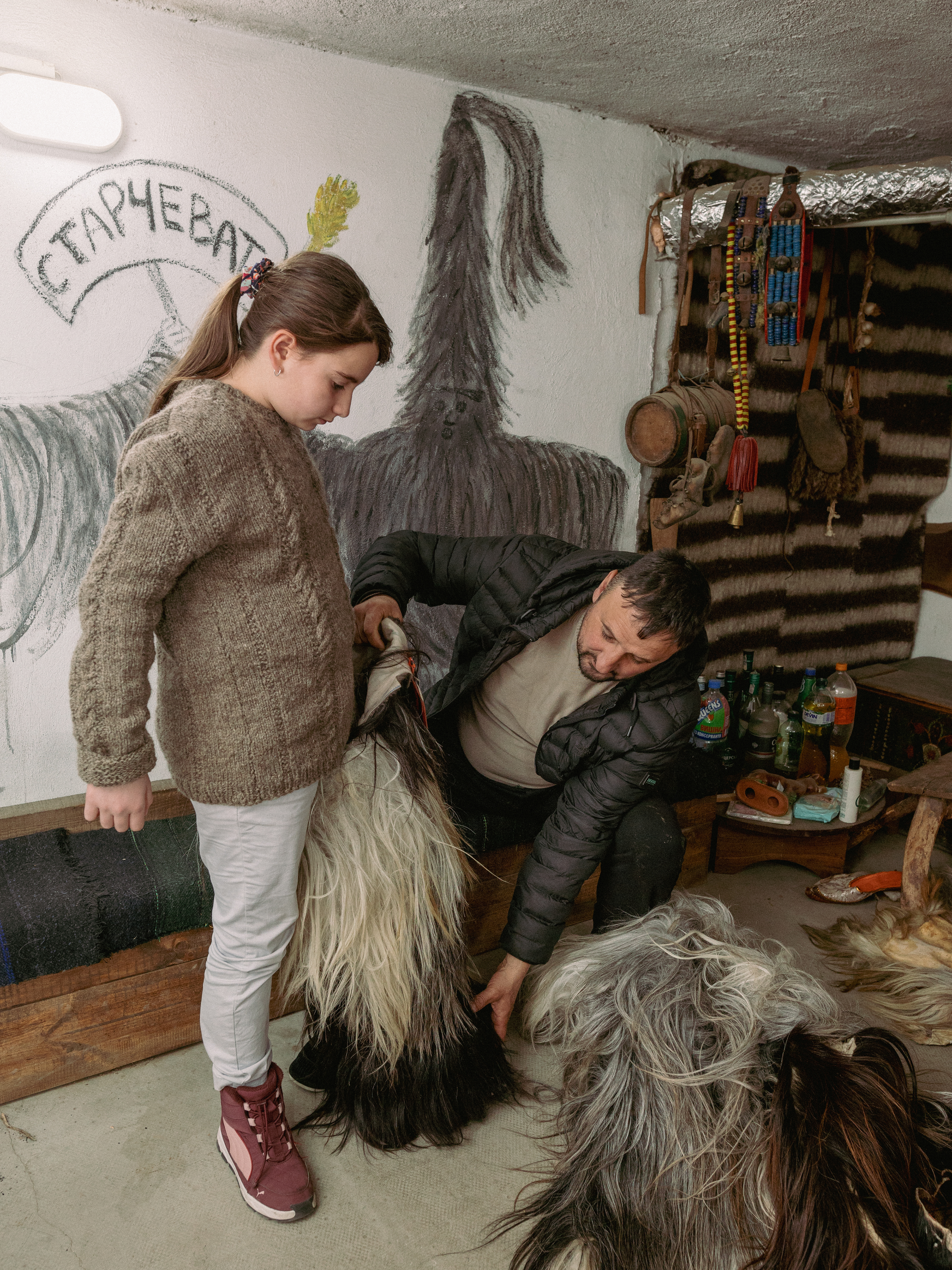
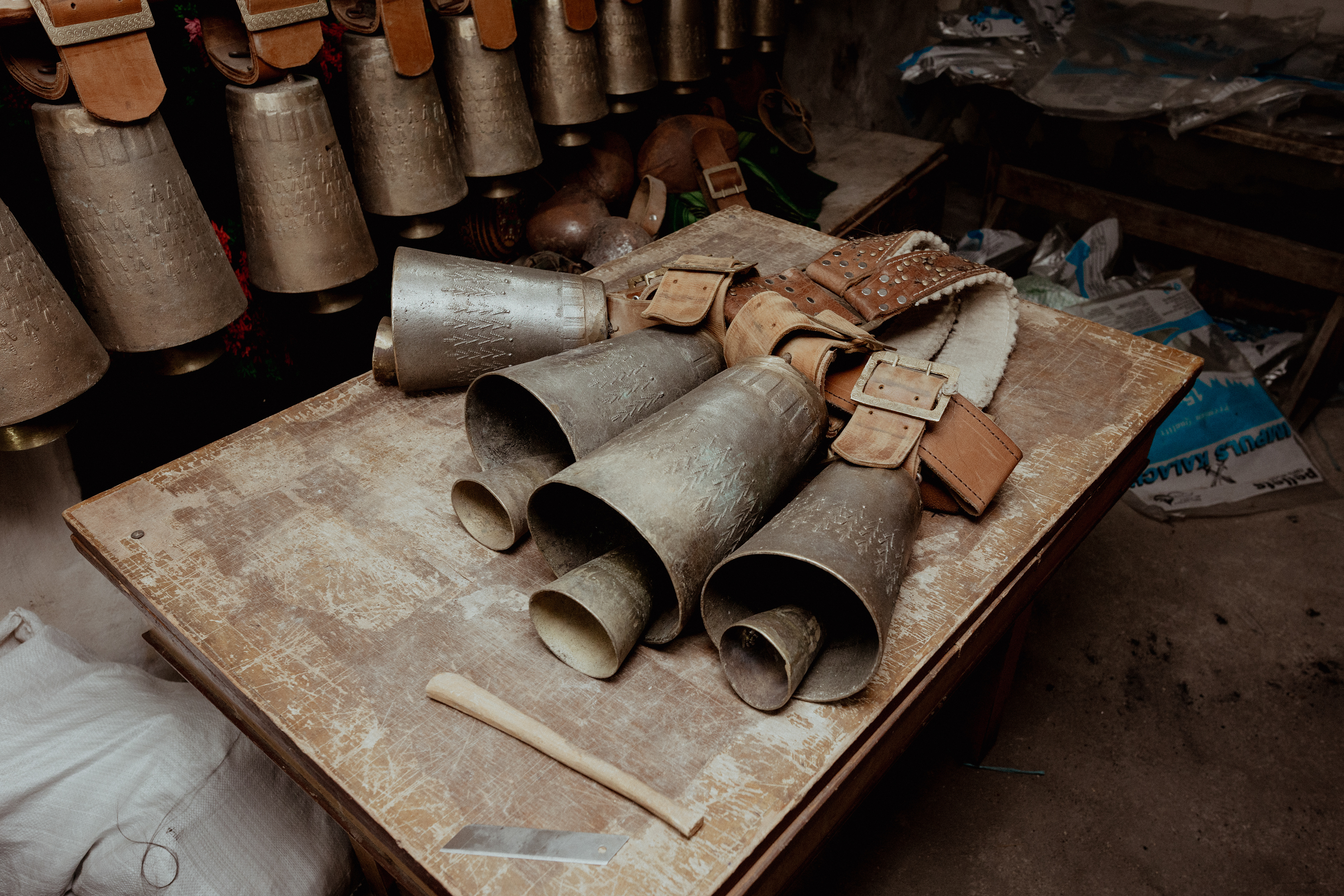
Meanwhile, a few houses away, another craftsman is making another element of the costume. This is Atanas who creates the belts for the bells. He says that his wonderment grew more and more until 2 years ago when he started his hobby - the creation of belts. At first, he made the straps for more than a week. After 2 years of work and love to the craft, Atanas managed to make them in no more than 2 days, today. Not only he creates belts capable of supporting the 60kg set of bells, but he also adds embellishments to his product. His various prints and his creativity result in a perfect designer product worthy to the people wearing the marmal suits. Atanas is definitely one of those people who make us feel impressed and amazed, not only by his role, but also by the interest that he has.
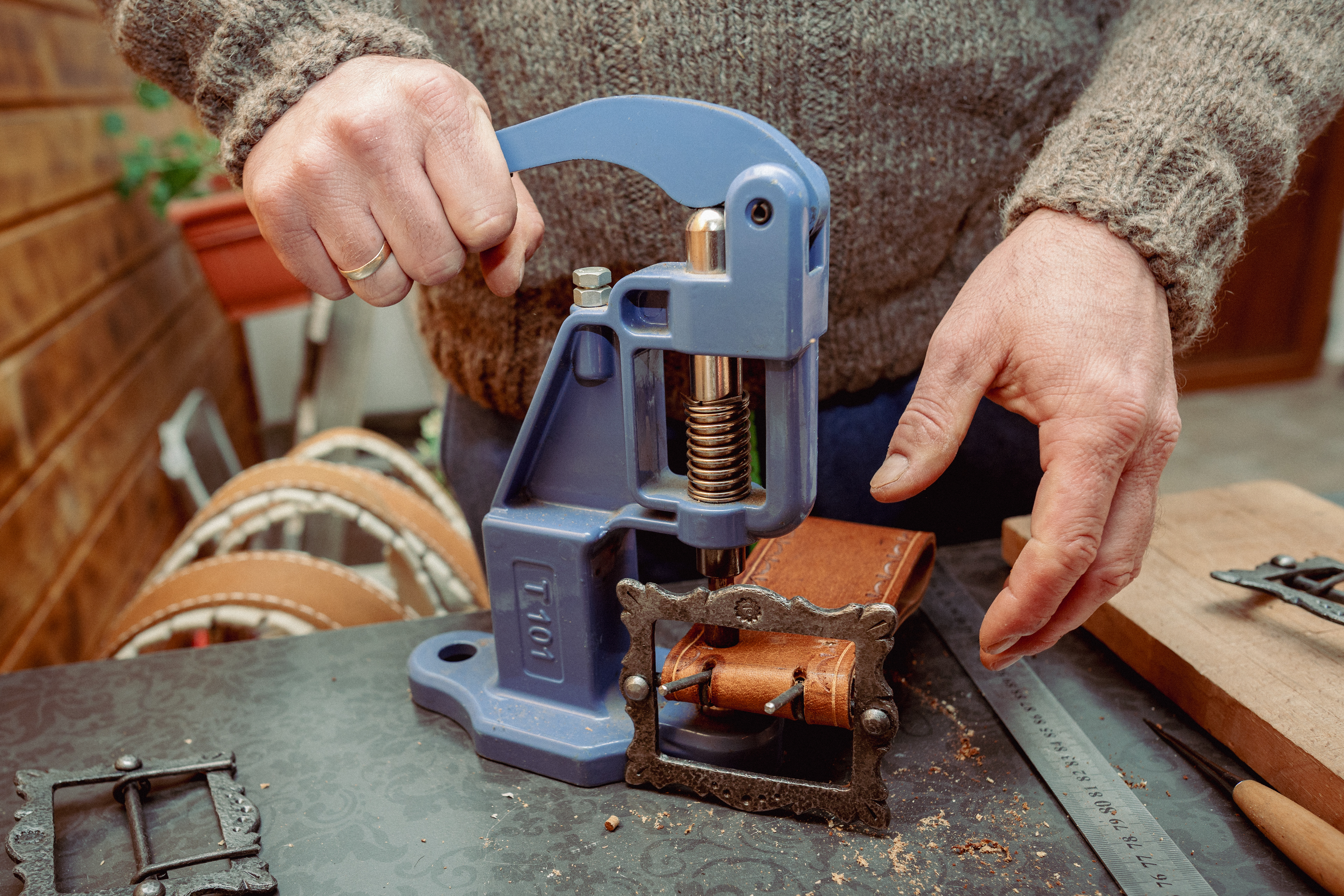
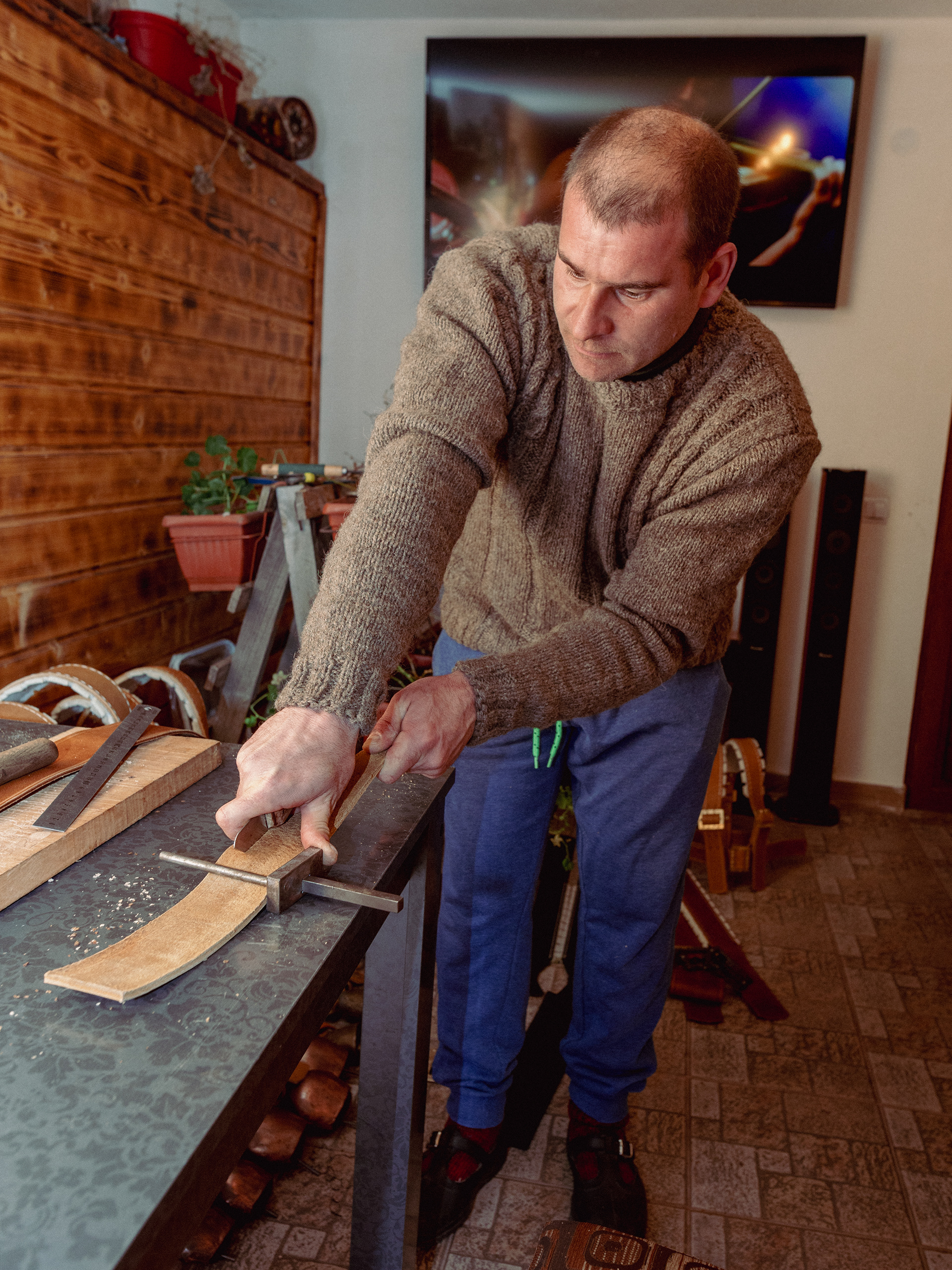
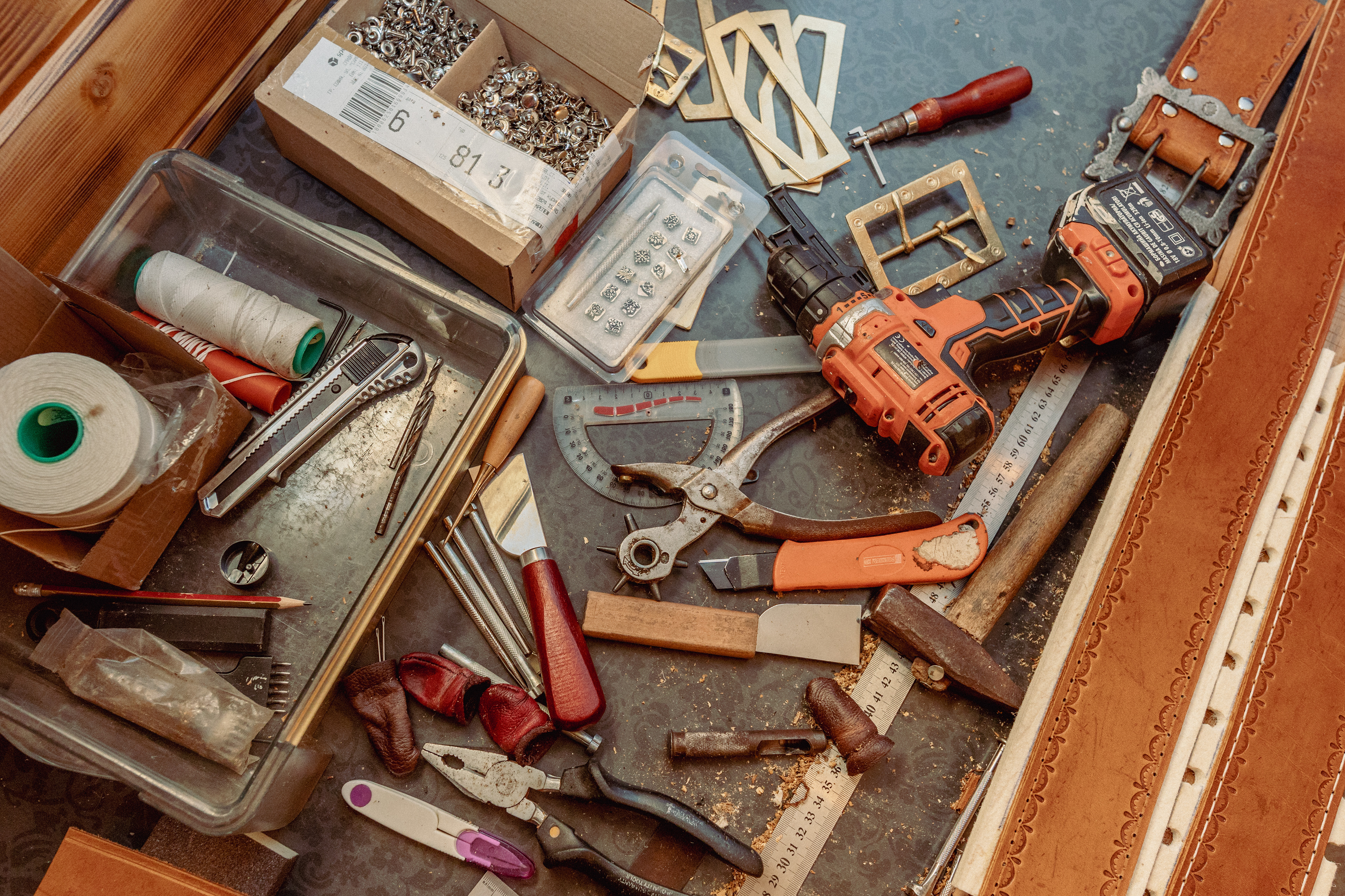
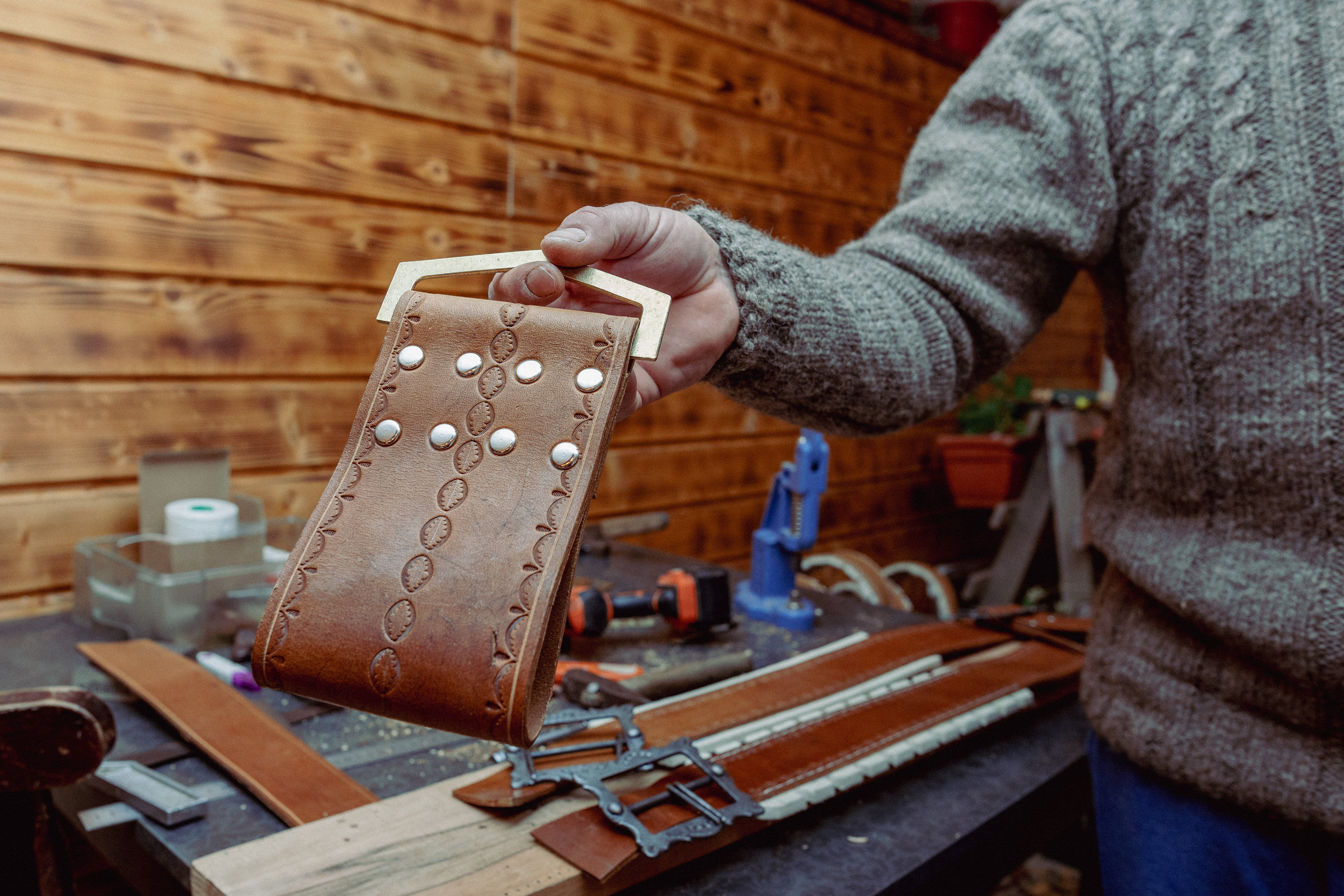
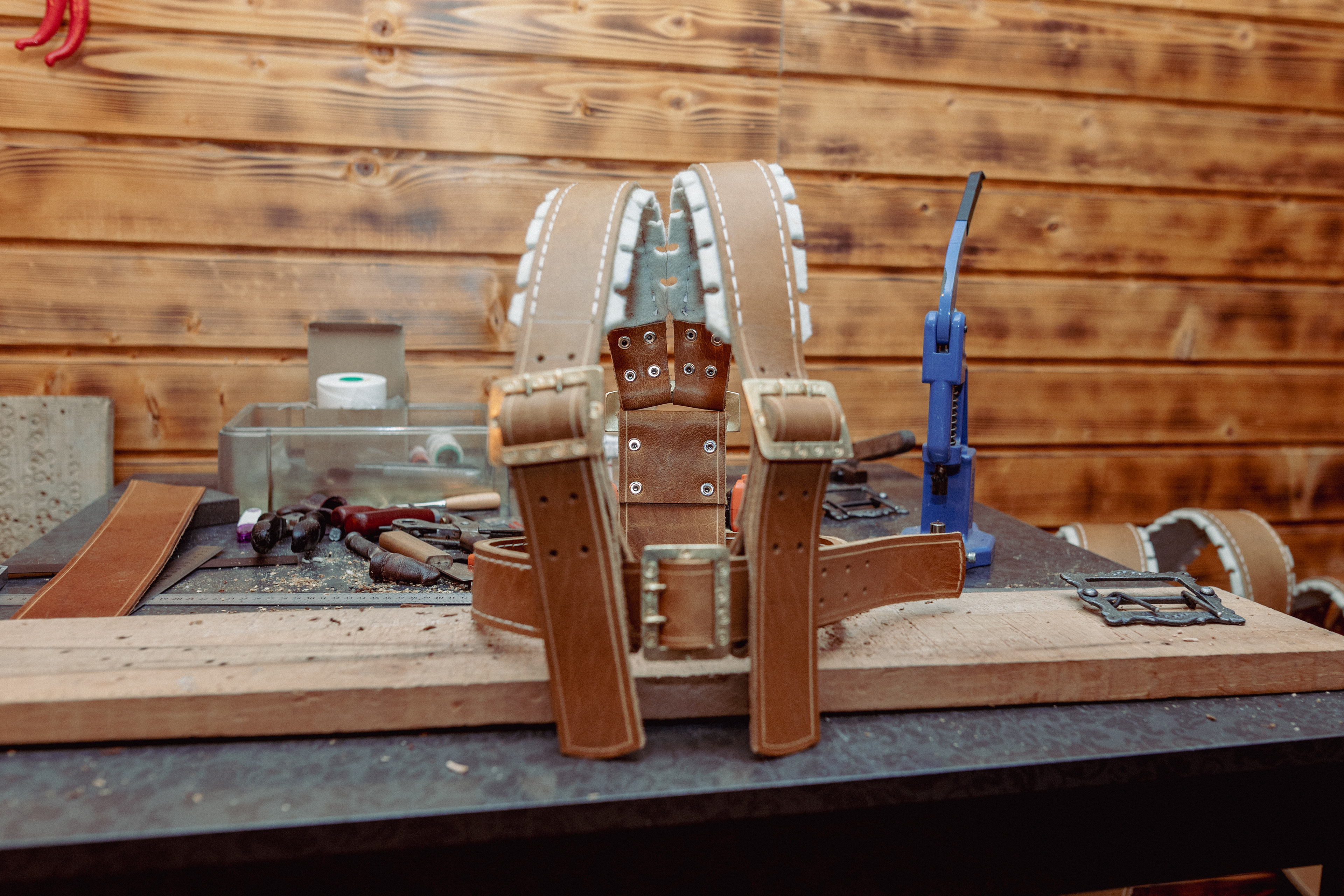
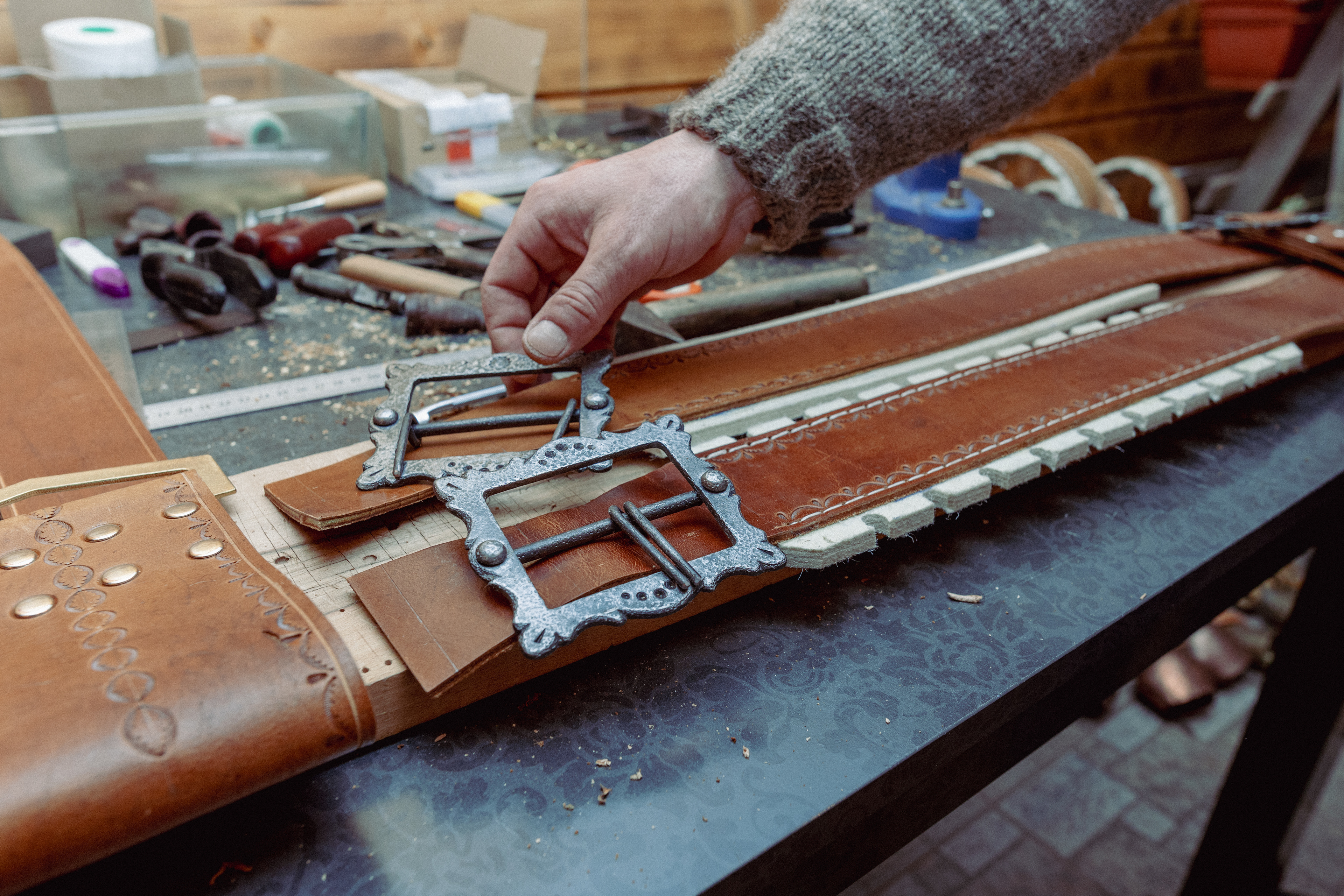
The buckles he uses for his belts are work of one of the greatest and most famous blacksmiths in Bulgaria and beyond. This is Radoslav Sarafov, or as he prefers to be called - Uncle blacksmith. Sarafov has over 20 years of experience in his field and says that anyone can make the product, the real and difficult part of the craft is imagination with which to come up with the design. So is the design of the buckles. He says that by the viewer’s side, ironwork looks attractive and easy, but actually a buckle takes hours of hard work. In a day he cannot create more than three belt buckles, but for each of them he uses all his strength and skill, going through many tools in his forge. His task is no less significant and really adds a finishing touch to the belts. Not only his job, but his hobby is also related to traditions, so he is included in the list of people preserving the native. Although he does not like to splurge, his character and unstoppable spirit to continue creating is evident.
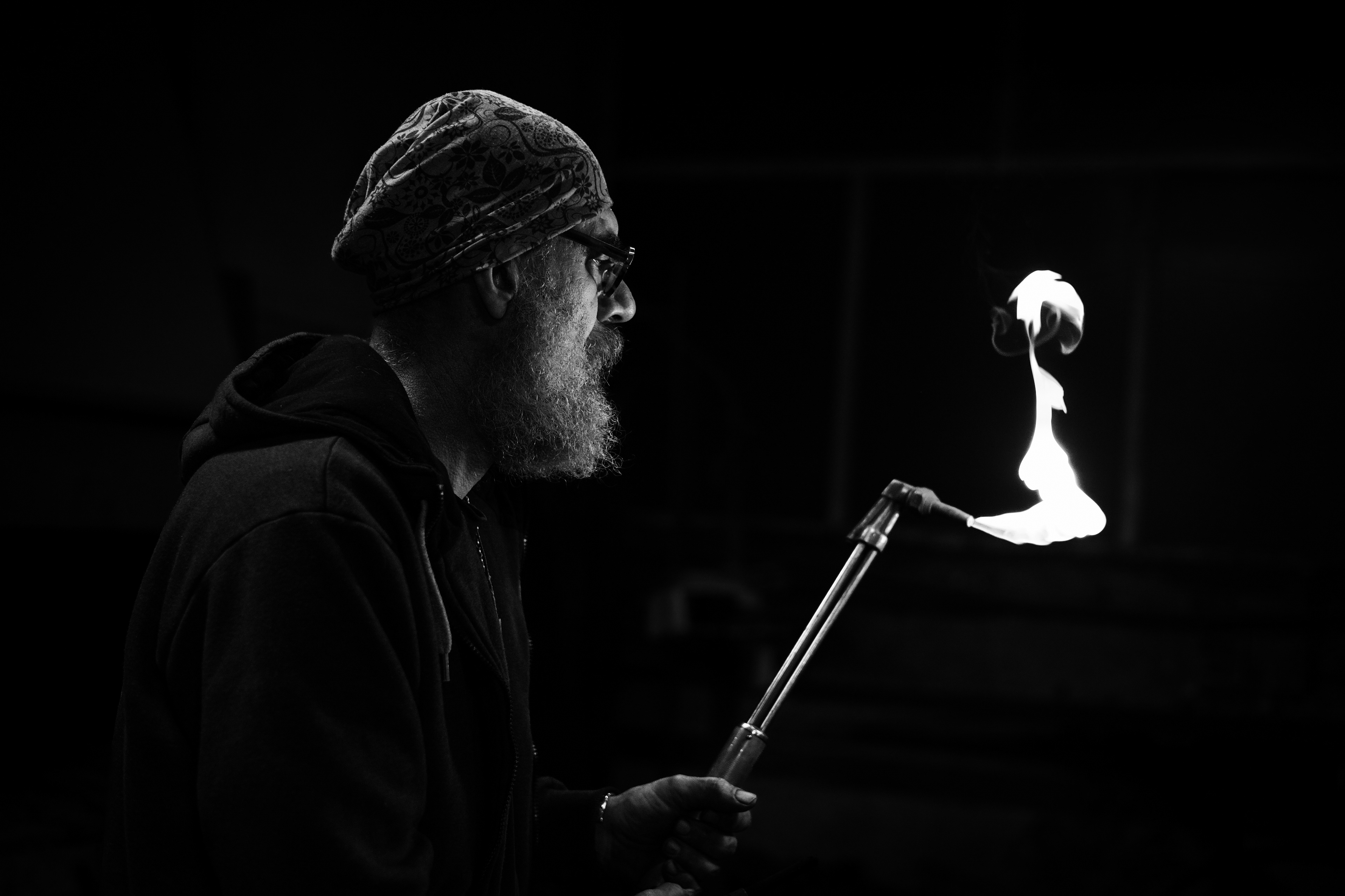
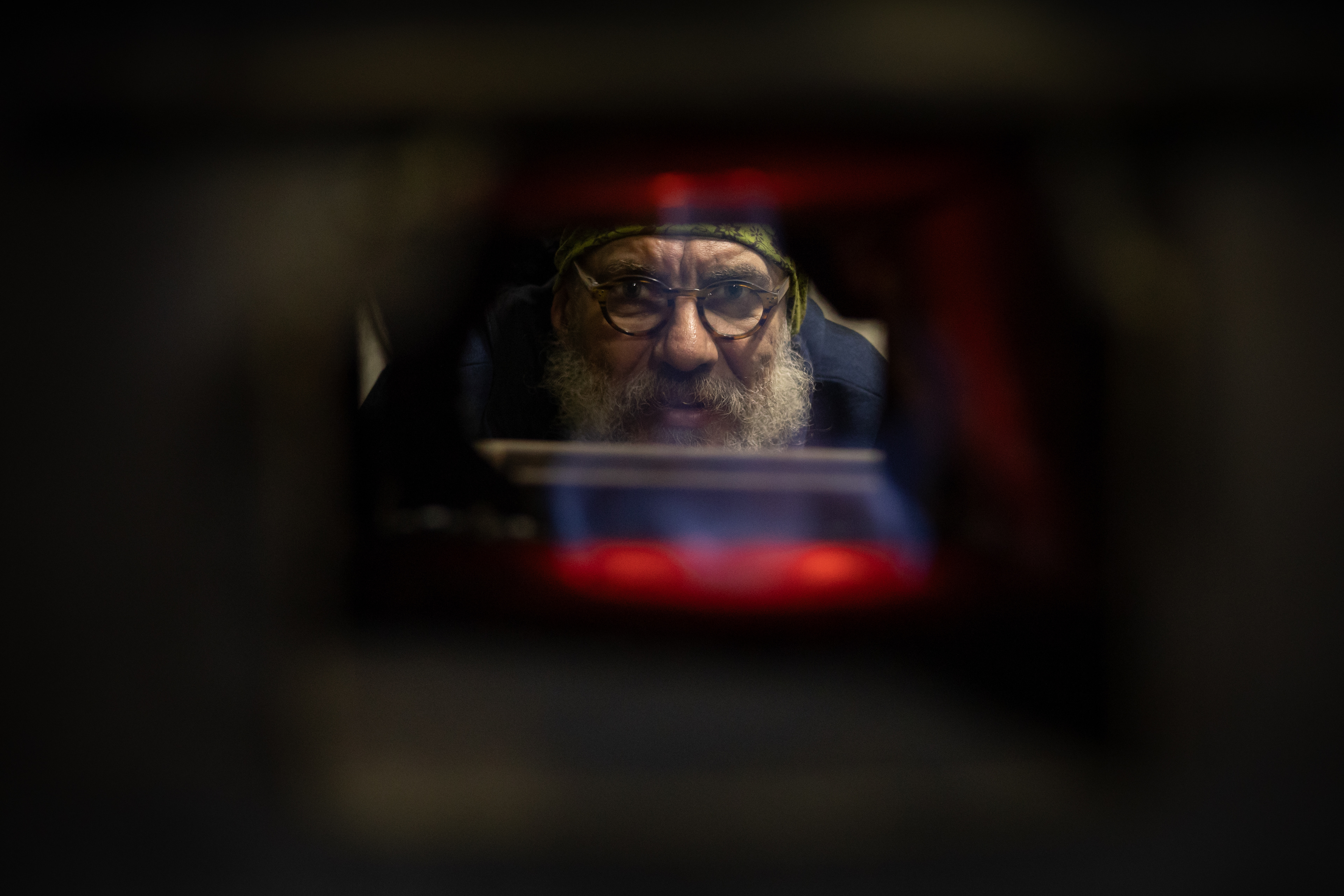
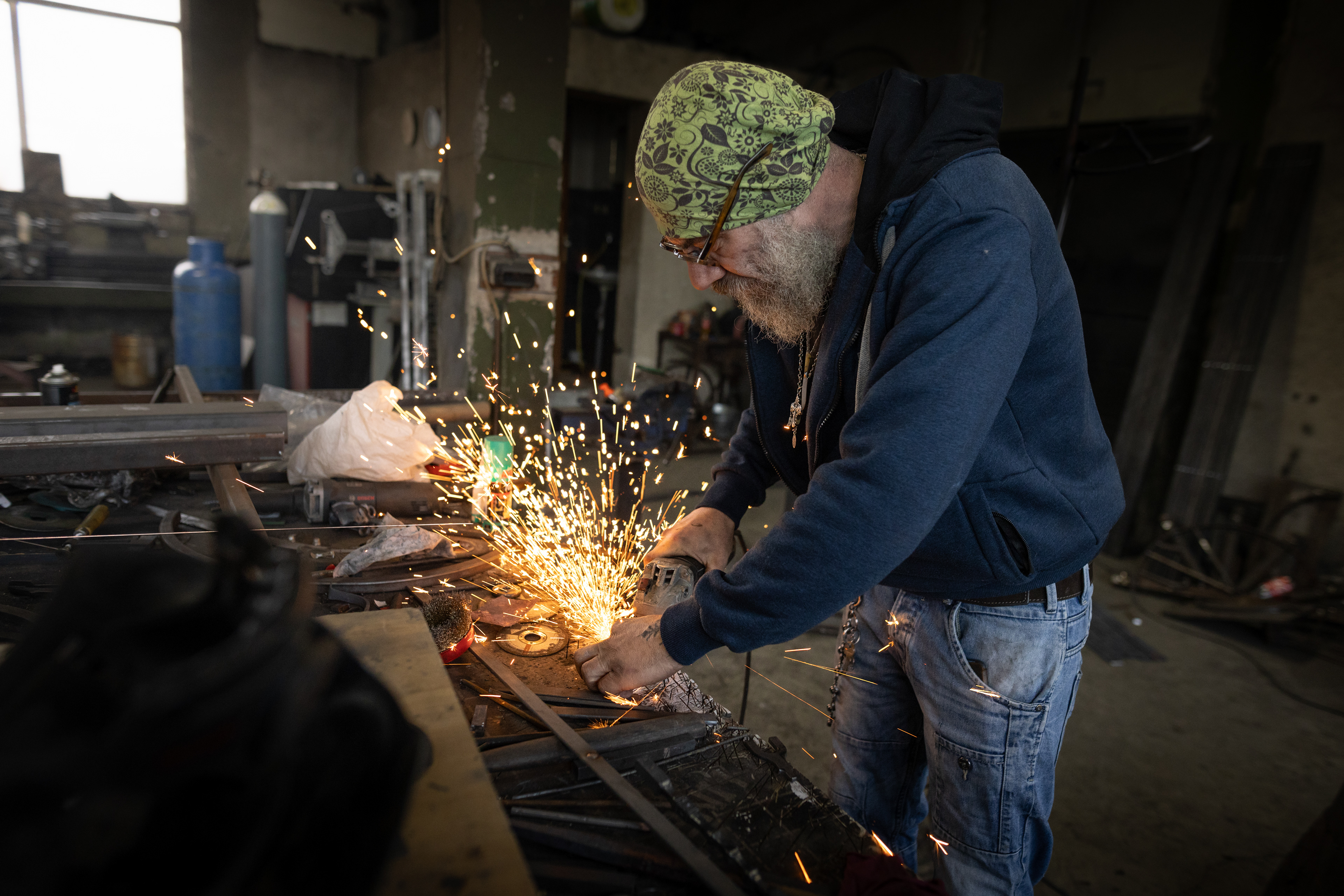
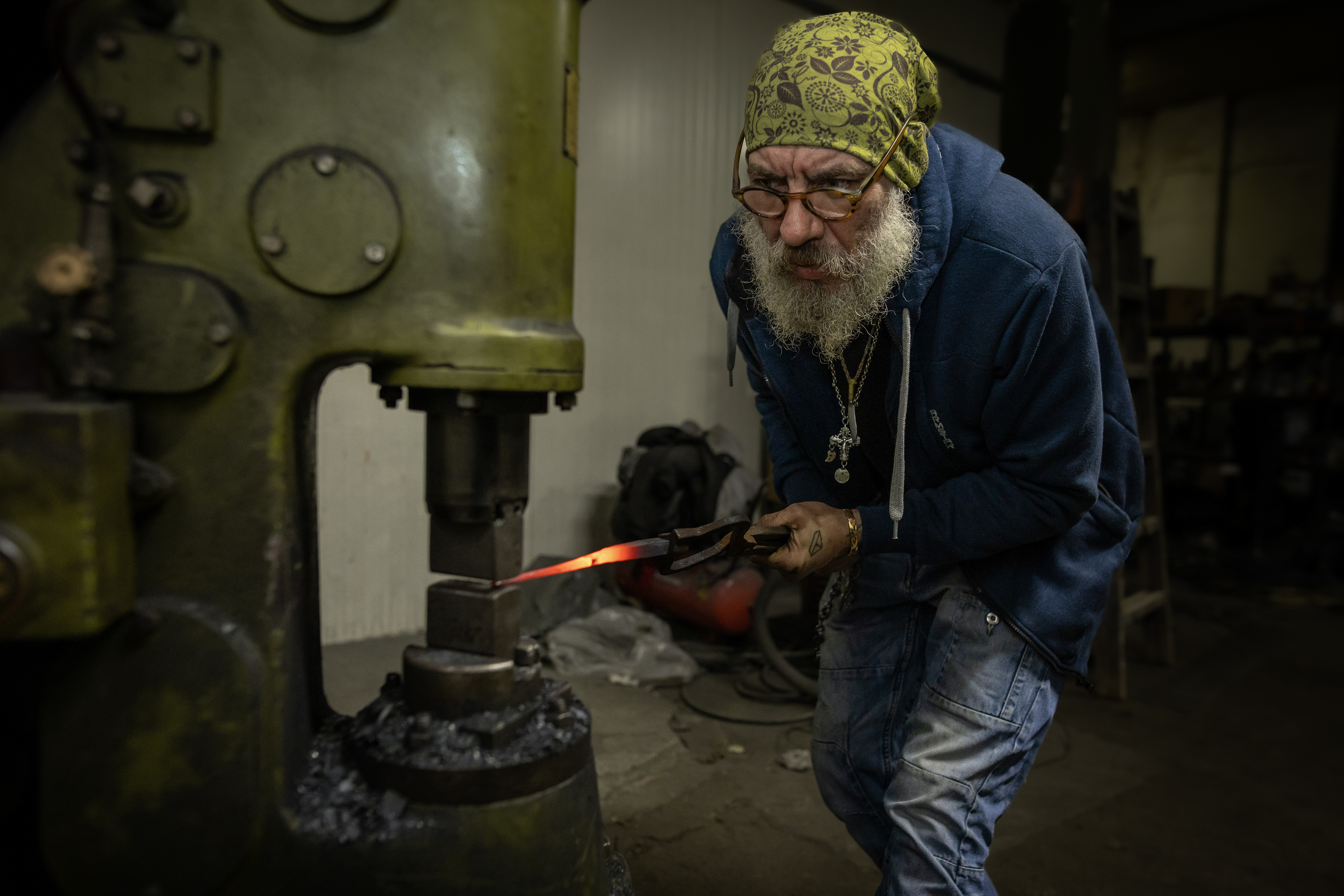
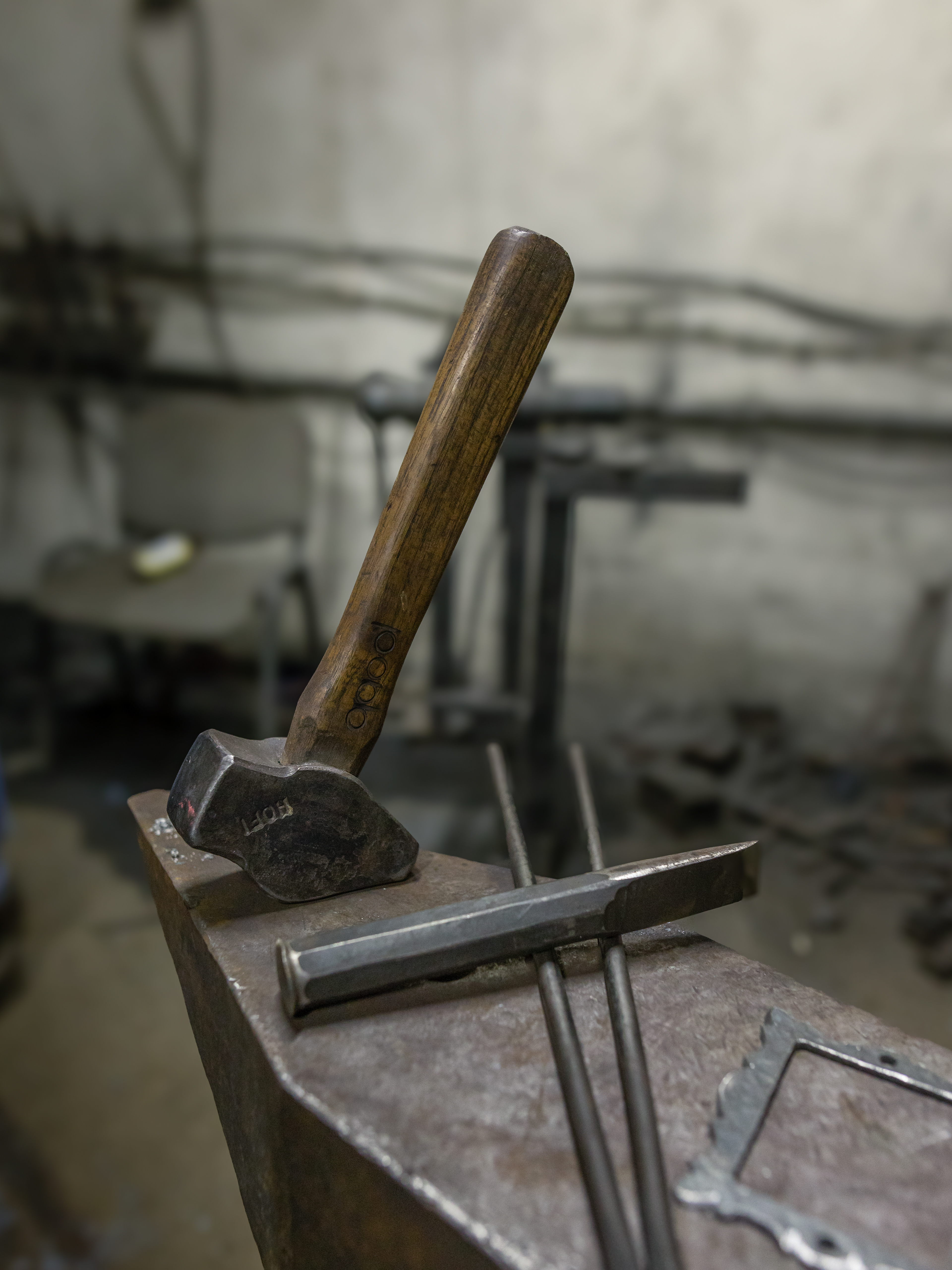
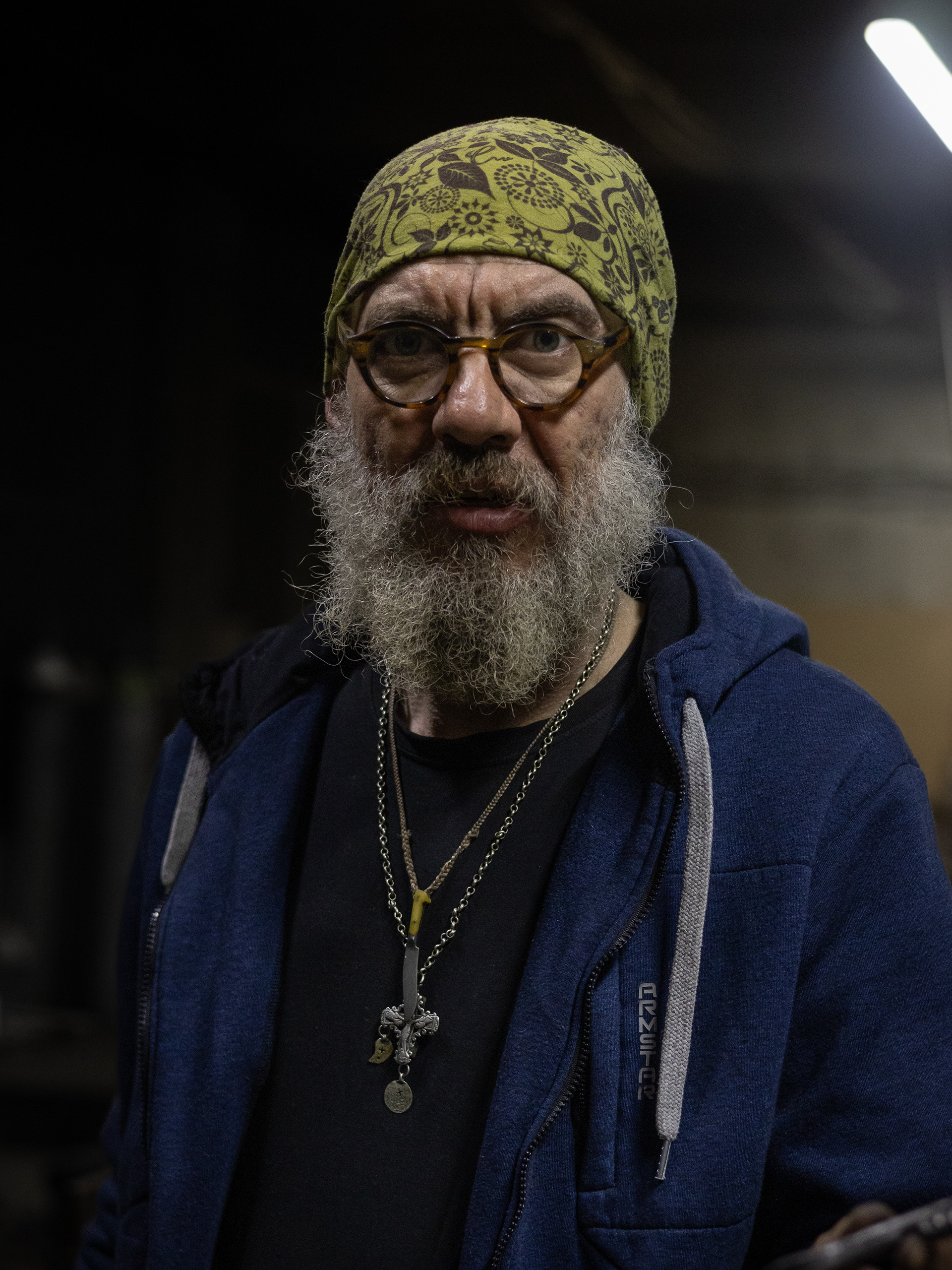
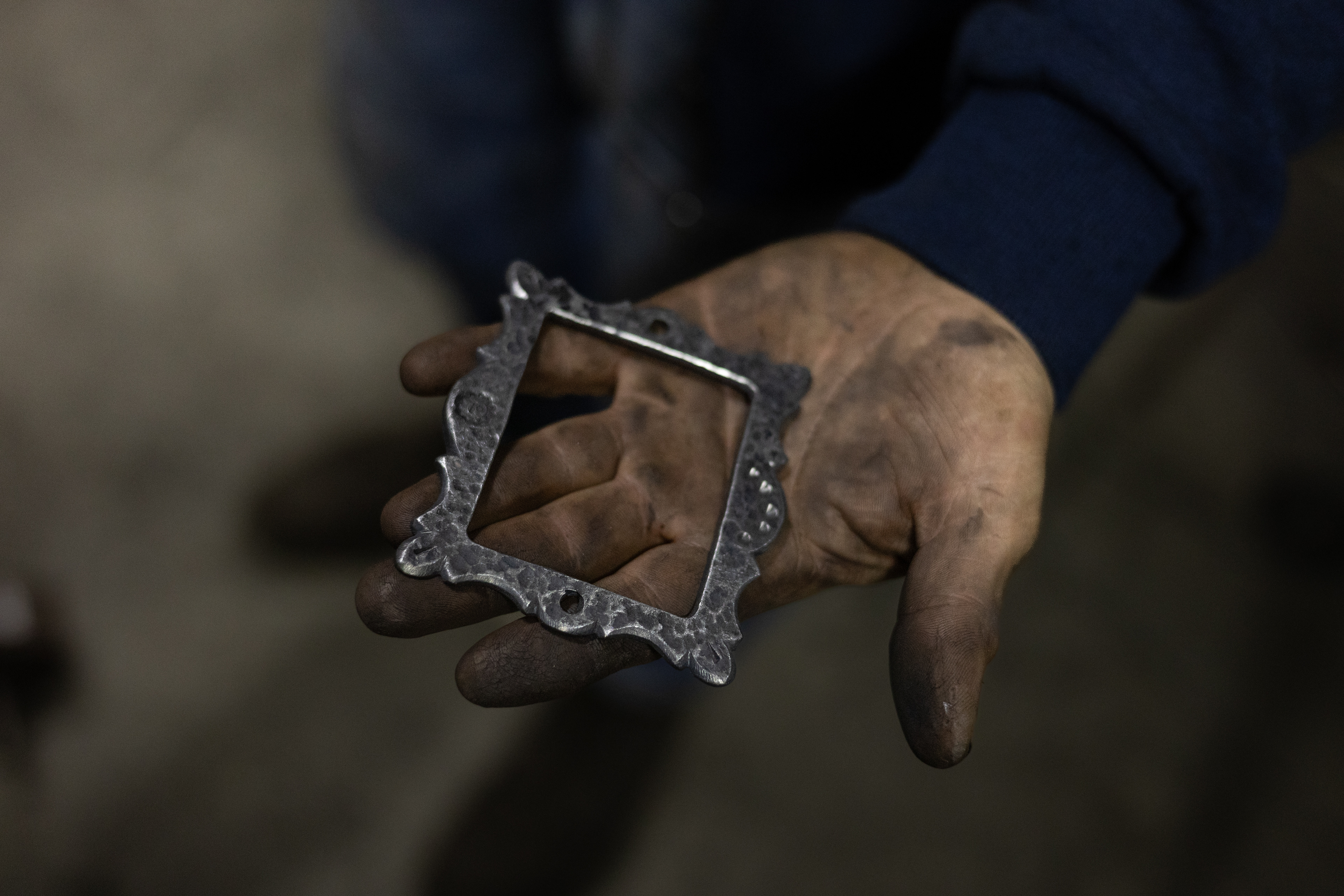
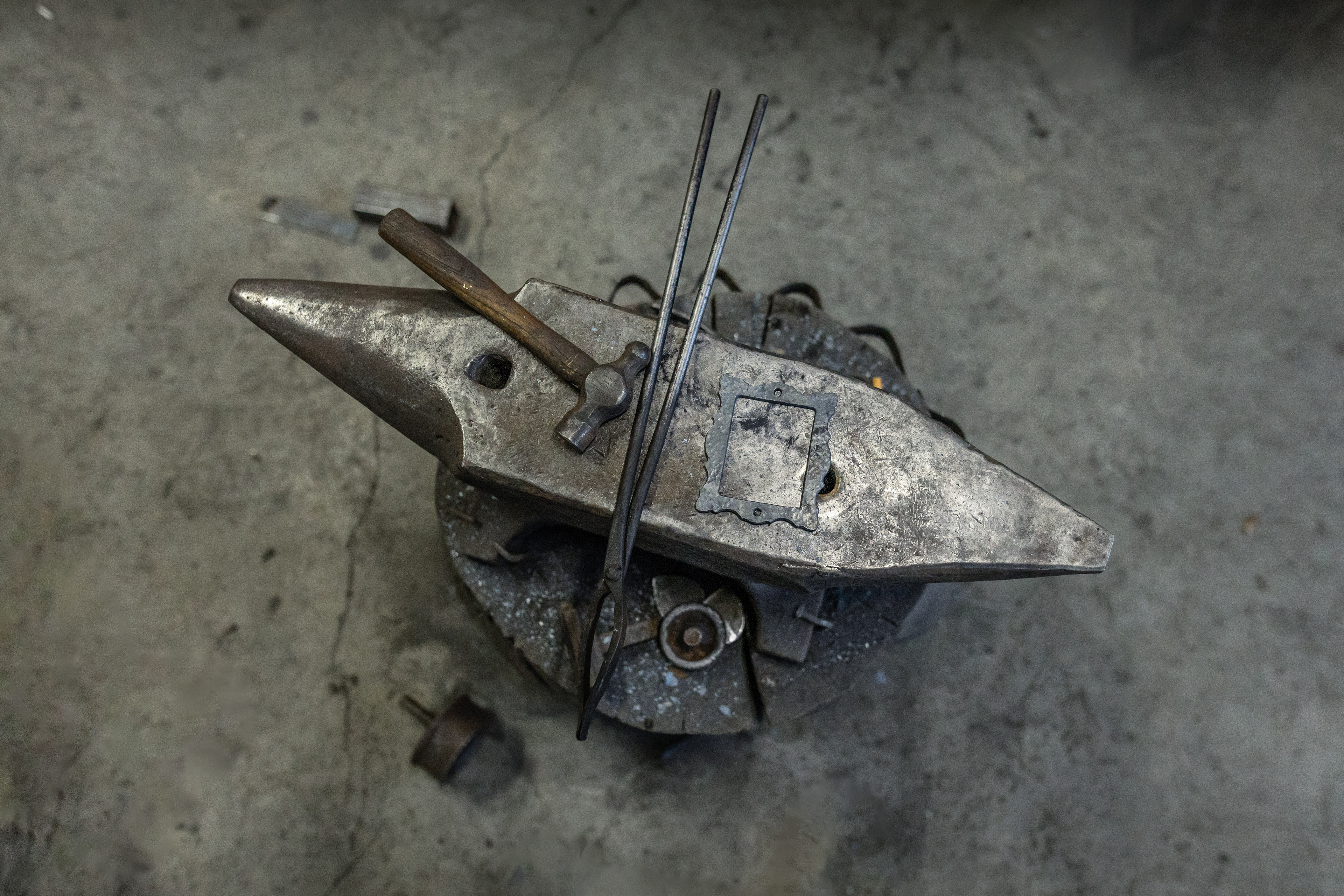
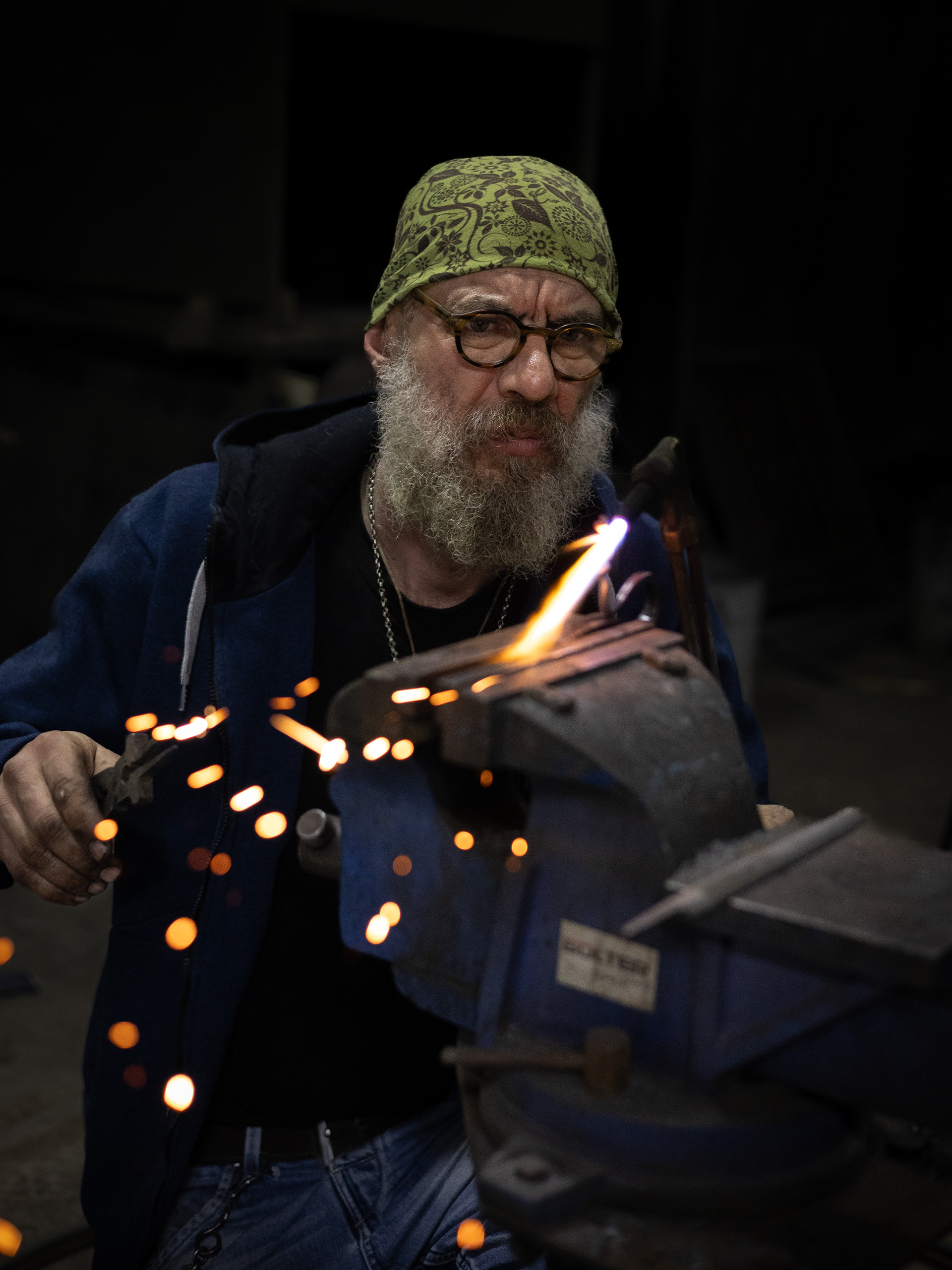
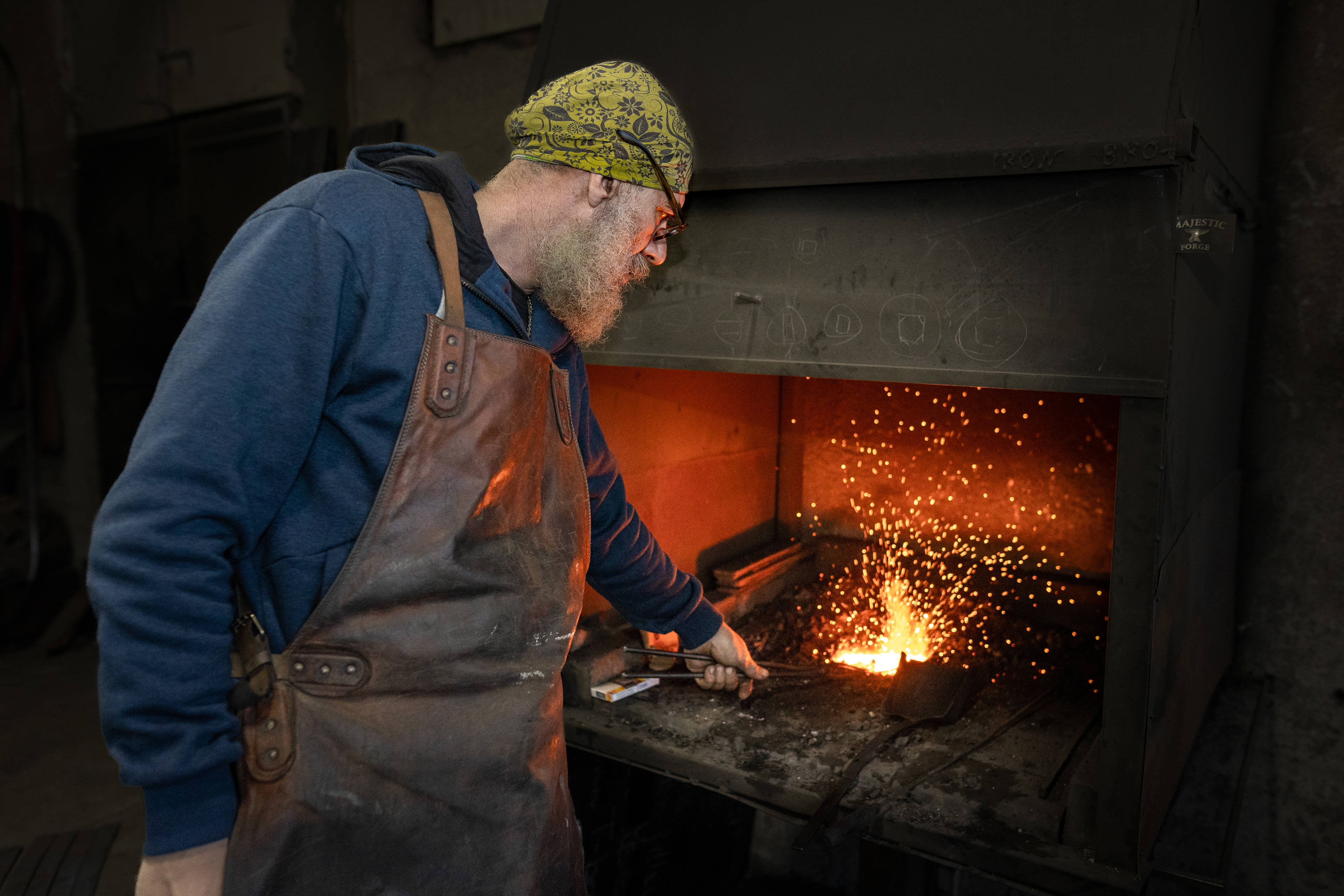
When everyone works as a team and communicates with each other, the final product - the costumes take on the essence of each craftsman and are ready to be used in local celebrations or travel to the European carnivals that often welcome the local marmals. Blago shares that their group has repeatedly attended such European carnivals. One of them was in Nice, France, where people were amazed by the kukers and their tall and hairy masks. According to Blago, to be the creator of such a costume or to be a chaush (kuker) yourself, means to bring joy and fun to people, and that is exactly what makes him proud.
The marmals and their games originate from thousands of years ago in the lands of the Thracians. A legend about the Thracian marmal says that the Thracians in the cult of the Universal God performed rituals with goats. They sacrificed exactly 7 goats or billies, and made a suit from the skins, which they deliberately did not salt down. The ritual was done high in the mountains, closer to their god, and the goats were not randomly chosen. The Thracians thought that the goat was an animal which usually lived high, on the peaks, and was believed to be a creature of God. It is believed that this is why the Thracians also used goat skins to make their military clothes. It is no coincidence that the number 7 is holy in many religions - seven days in a week, seven angels on the way to the Heaven, seven demons on the way to the Hell, etc. The seven skins were distributed: 4 for the arms and legs, 2 for the torso and 1 for the mask. After the ritual, the costume was torn apart, and the skins were buried in the four directions. Thus it was believed that the sacrificial ritual was completed.
At a later stage, when the Bulgarian tribes came to the lands of the Thracians - today's Bulgaria, they also brought the bells. The symbolism here fell on the shape and resemblance of the bells to the head. In the past, the Bulgarians hung on themselves and their horses skulls of an equal or greater defeated opponent. In order not to appear barbaric, they gradually replaced the skulls with bells. Then the chans (bells) become part of the ritual, which gradually acquires the form of a tradition. Although initially kukerism was chased by the Church and the Koran, it turns out that tradition prevails and religion is the one that "loses this battle". Over time, this pagan tradition became associated with Christianity and the faith of the people, and so we come to today. Despite all the Christian belives, in some parts of the Macedonian region, even today, small children are fed for first time with milk from a bell, so that the child will be strong.
The chans in Razlog and Bansko today are no longer associated with supremacy and power, but they are an invariable element of the marmal's costumes. In the past, it has been known in the region that each hamlet had its own marmal group with which it participated in the celebration, and the entire celebration and all participants in Razlog are still known today as "Starchevata". Starchevata begins three months before the New Year - then the new costumes are made, then the old ones are repaired, then often in the evenings the participants from each Razlog neighborhood gather at Blago’s home and work on the organization for the First of January. In order for the performance to be in its full glory, the team of participants schedule which neighborhood at which time and through which part of the town it will pass. This early preparation does not only include the organization for the main carnival in January, because it is believed that every night, marmals from every hamlet must go out and walk around the neighborhoods to ward off the evil.
Over the centuries, from the Thracian beliefs, kukerism began as a cult of God, passing through the banishment of darkness - according to the old Bulgarians. They celebrated on December 22, when, according to the old Bulgarian calendar, the new year began - when Rus - the old sun goes away and Sur - the new sun comes and the day begins to grow. The old Bulgarians banished the darkness and celebrated. And we reach the 21st century when it is believed that with this celebration evil spirits are chased away. Iliya Tantilov, who works at the Razlog Historical Museum, says that even if it seems that over time the beliefs associated with Kukarism change, in fact the root is the same - the welcoming of the new time and the banishment of darkness or other words - evil.
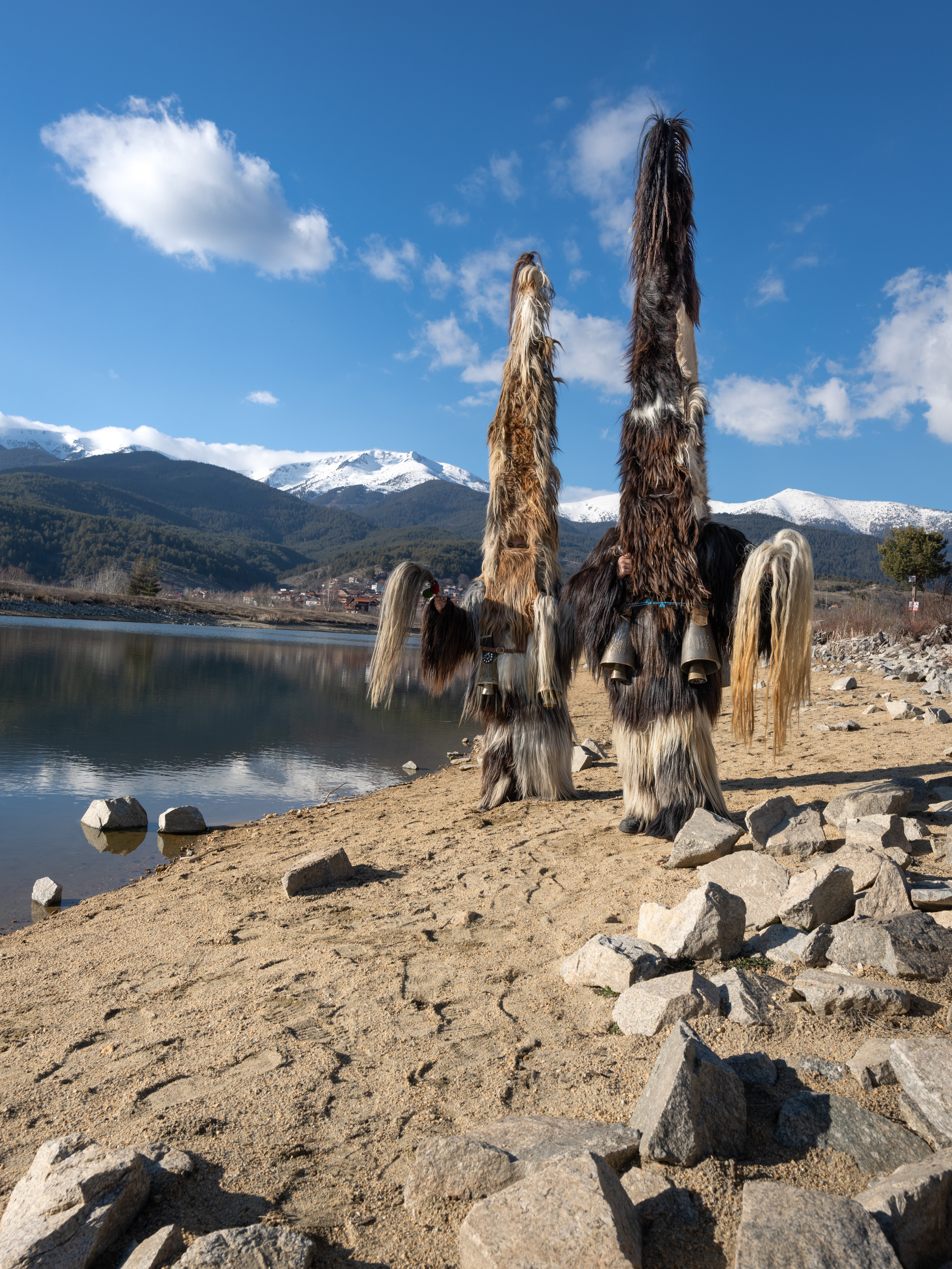
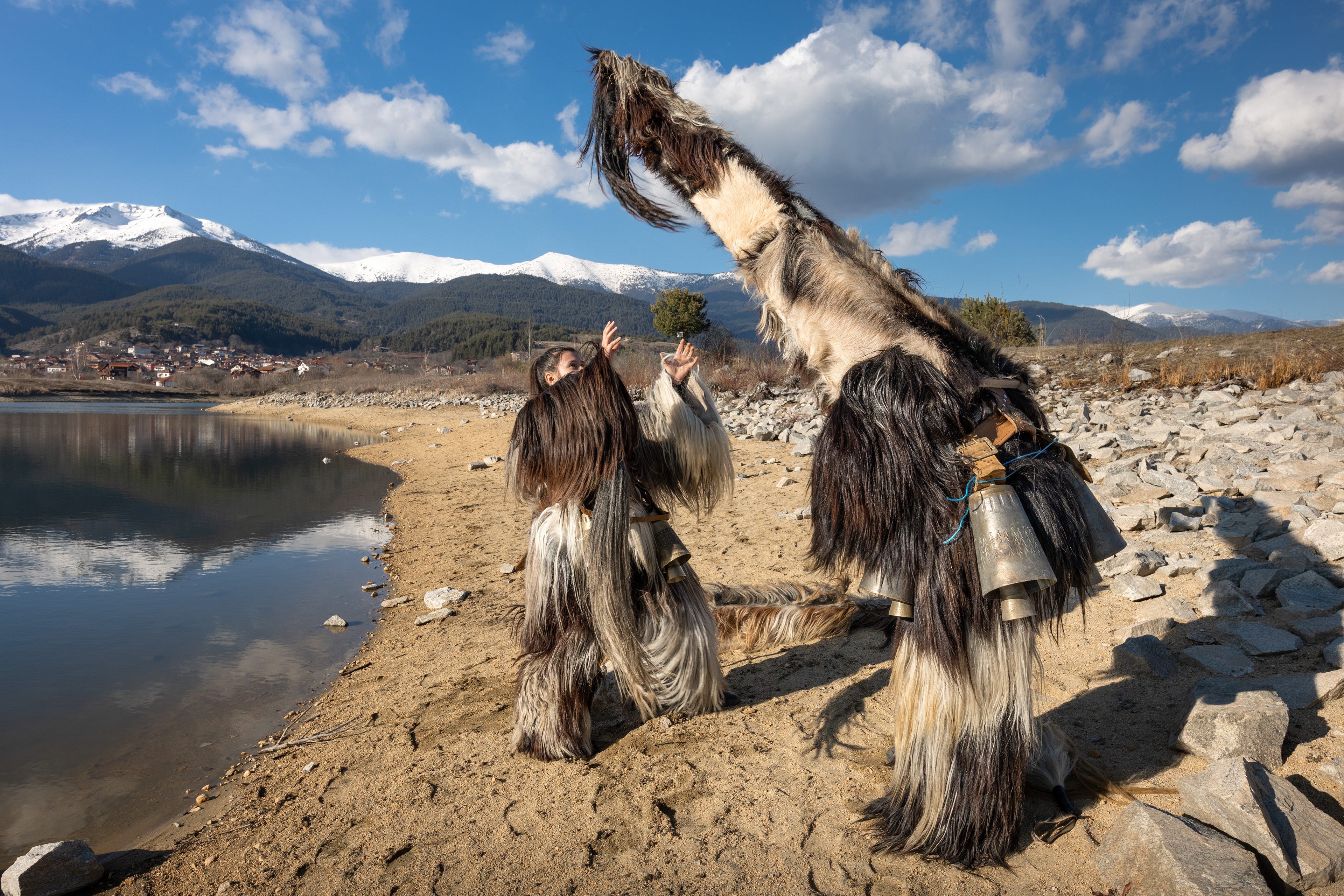
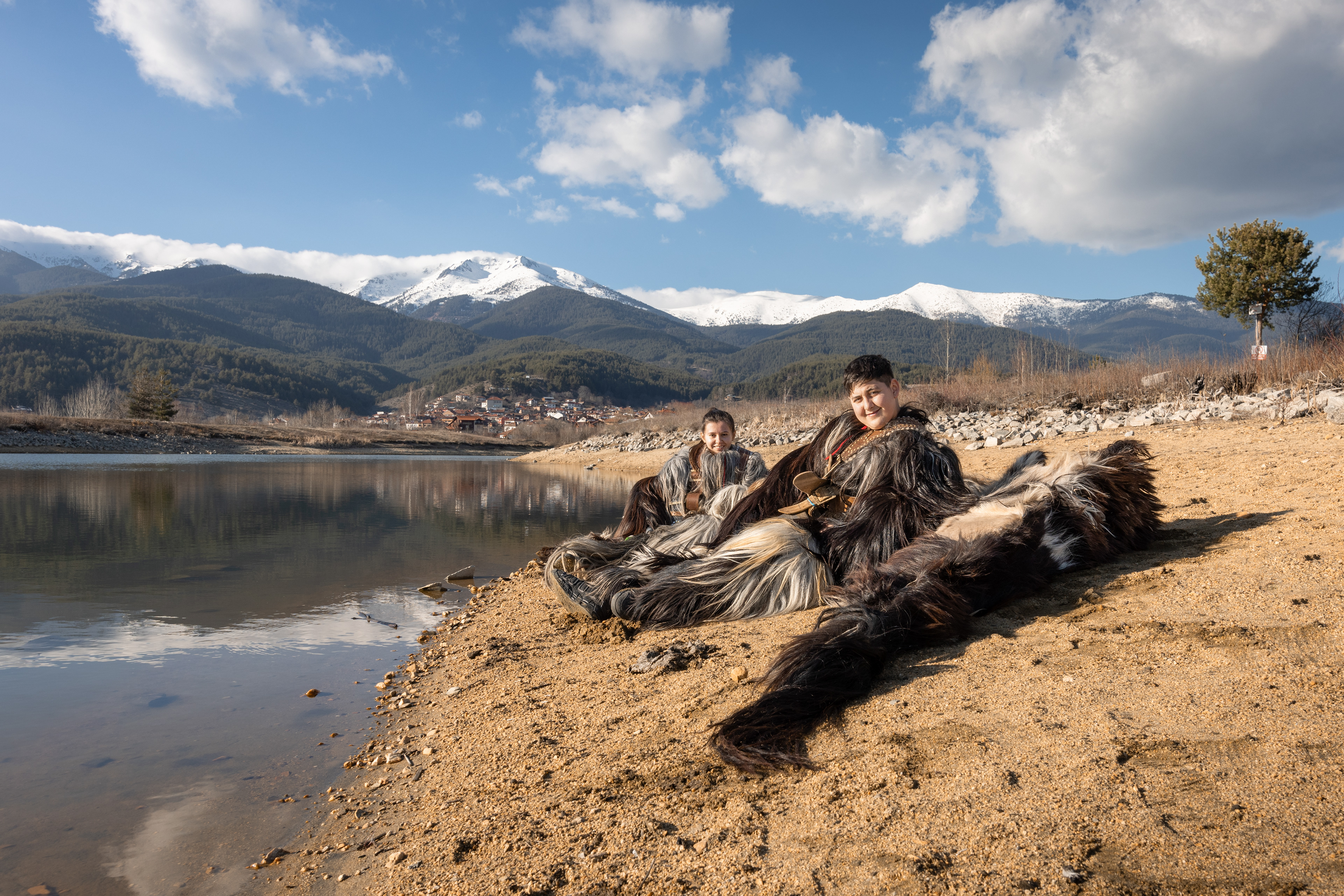
Iliya and Blago also stand behind a common thesis, which is the real change of the local tradition. They say that in the past, in this region, kukers were only young unmarried boys who were in the prime of their lives. Since each neighborhood has its own other characters such as priest, bearers, tinkers, bachelors, grandmothers and maidens, in the past they were all played by men and women did not participate in the celebration at all. Today, however, in order to preserve the tradition, everyone takes part in the carnival, from men and women to the elderly and children. Even today, the old custom of marmals being around the horo (Bulgarian folklore team dance) and guarding it is preserved. Although now they are guards merely symbolically, in the past they actually guarded the crowd and provided more space for it with their bichove (whips). And even if the tradition changes, the important thing for Blago is that it is still alive.
Tantilov also says that being a marmal means to change your identity for a day. The mask which is called "surad" is literally translated as father from "sur" and change from "rad". Therefore, a real kuker without a mask is not really a kuker at all. He must be wearing a mask so that he will be not recognisable in front of the other participants, tourists and spectators.
Starchevata, the festival in Bansko and other celebrations in the region are celebrated at the beginning of January, with the arrival of the New Year, when drums ring out the towns. The organization and the key to it goes precisely through the hands of these masters, creators, people who keep the tradition and all the participants of the carnivals, including the thousands of visitors who want to touch to the marmals magic and local beliefs.
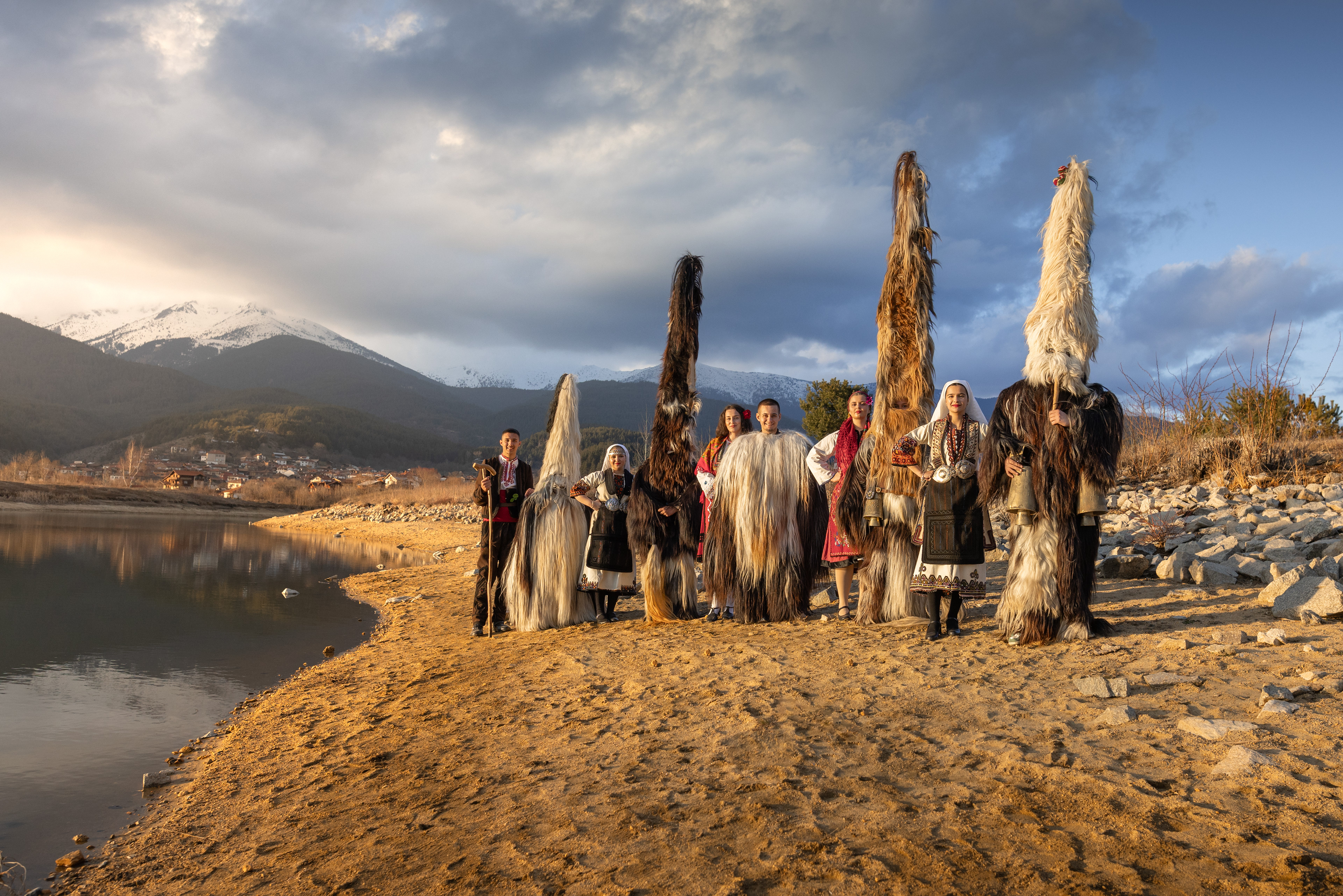
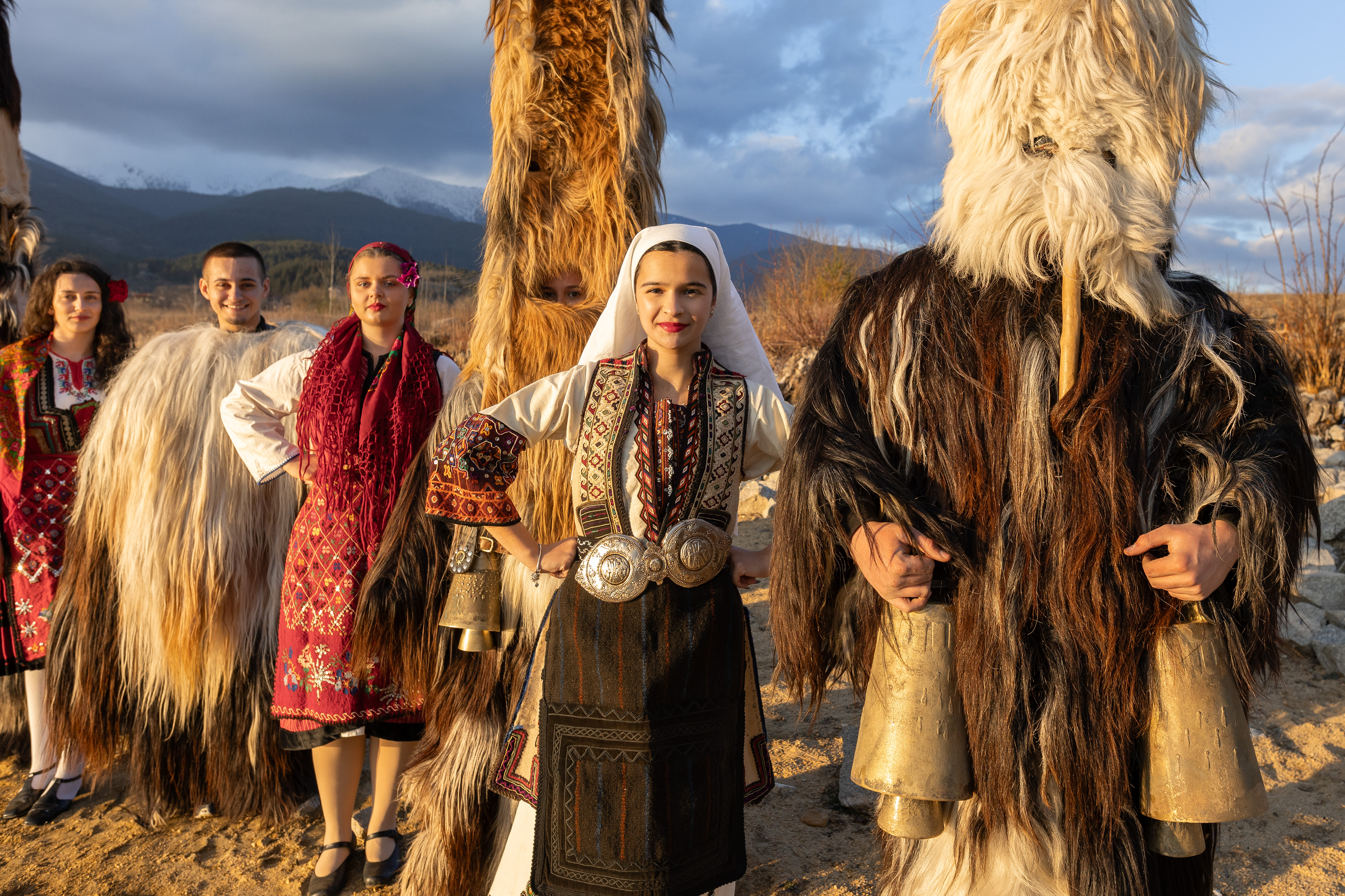
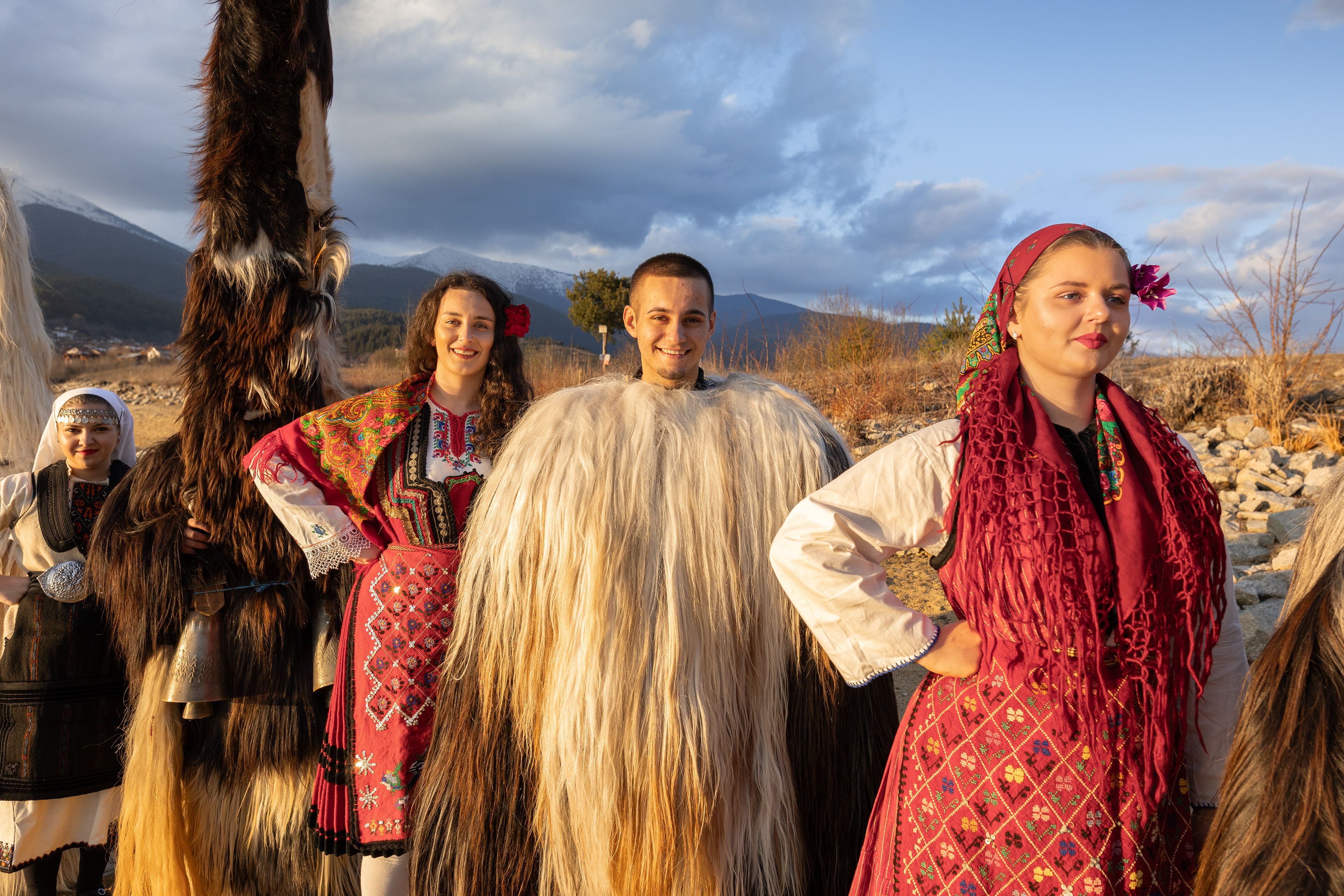
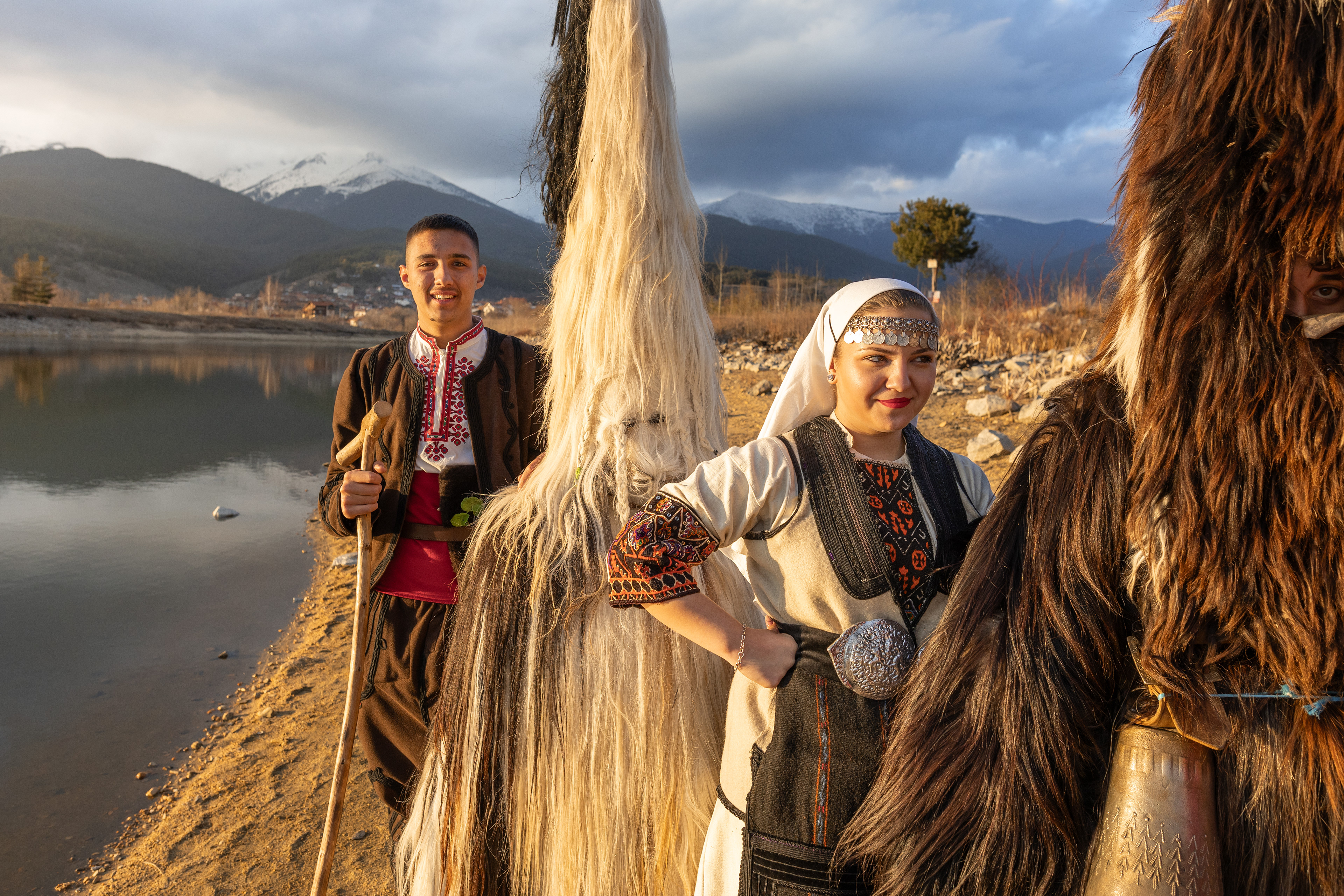
Here you will find prints from the project to order, their sizes and prices, as well.
Thanks to everyone of you who shared the project in the social medias, where it reached to over 50 000 people for the first 3 days!